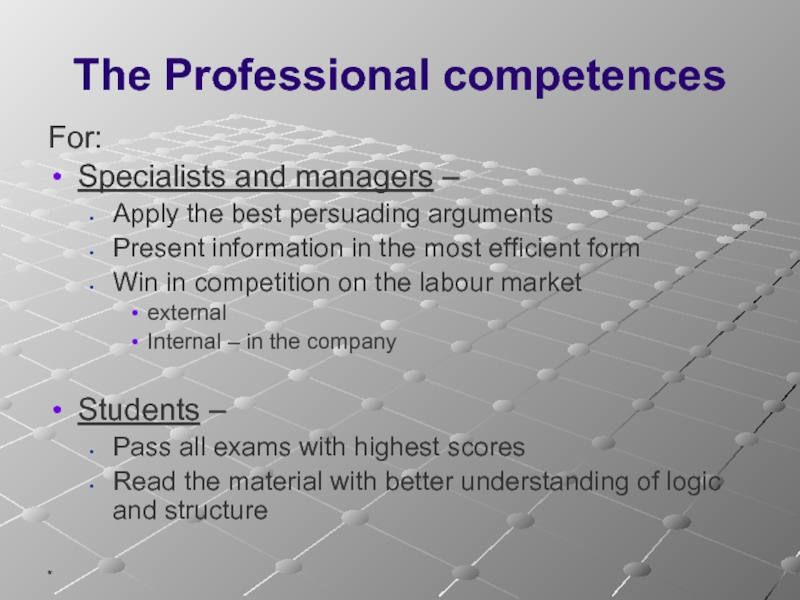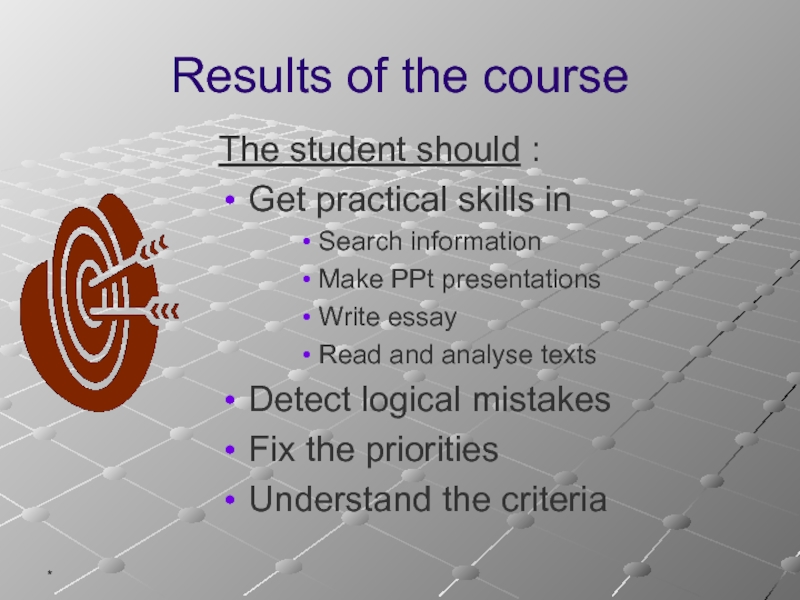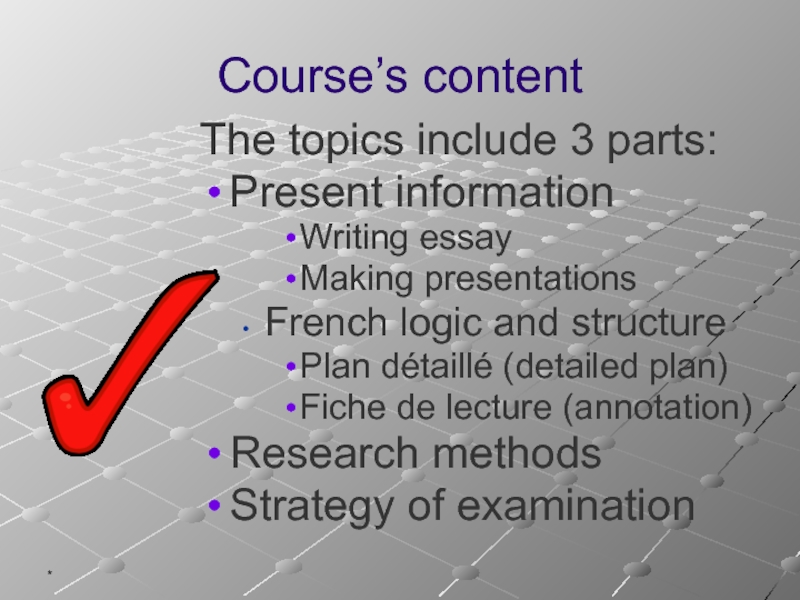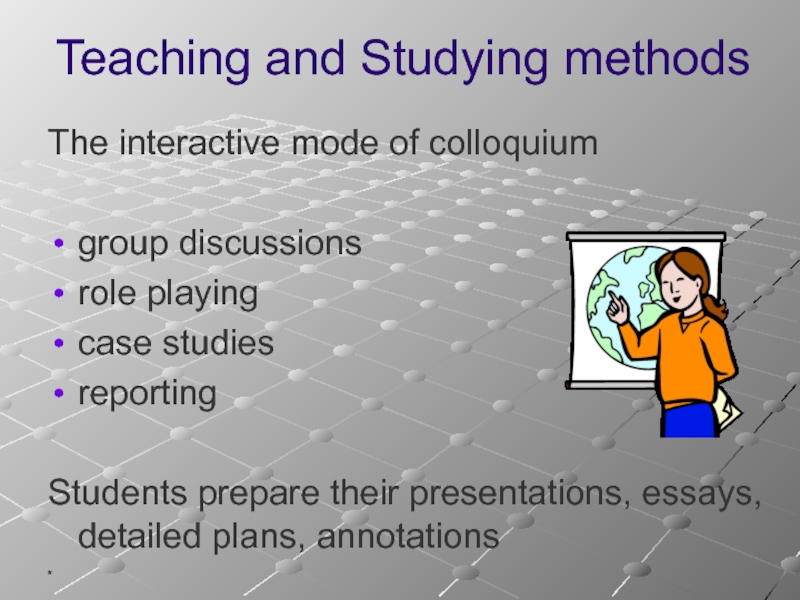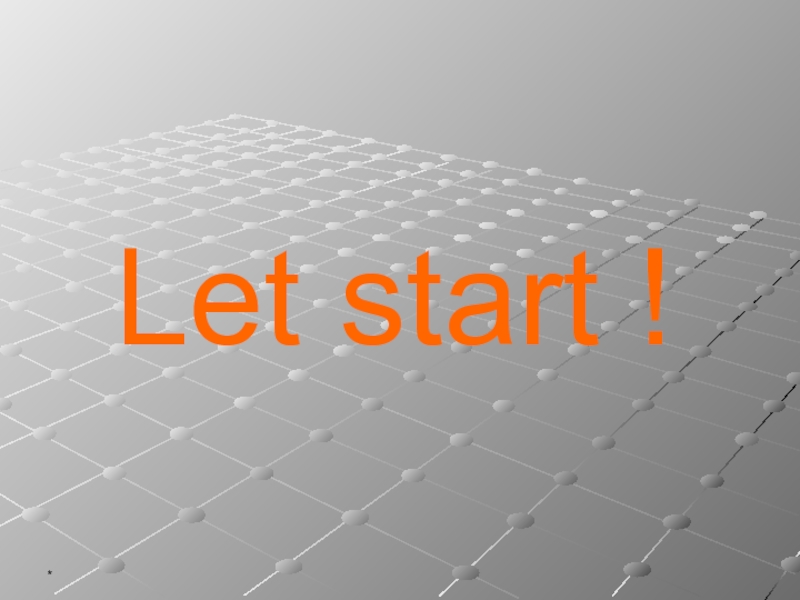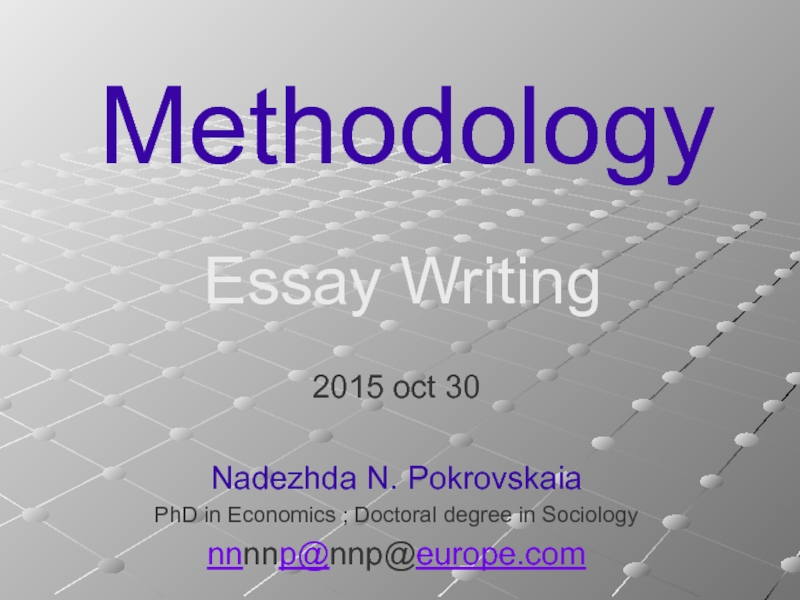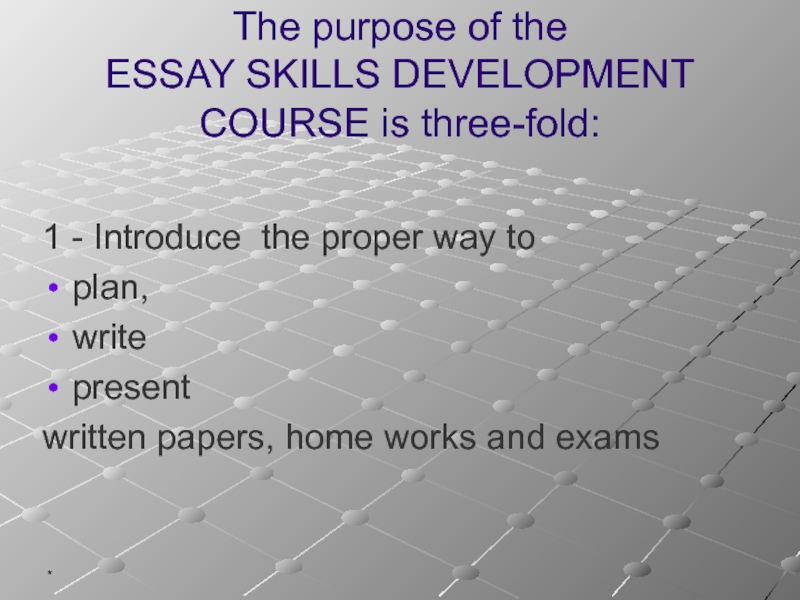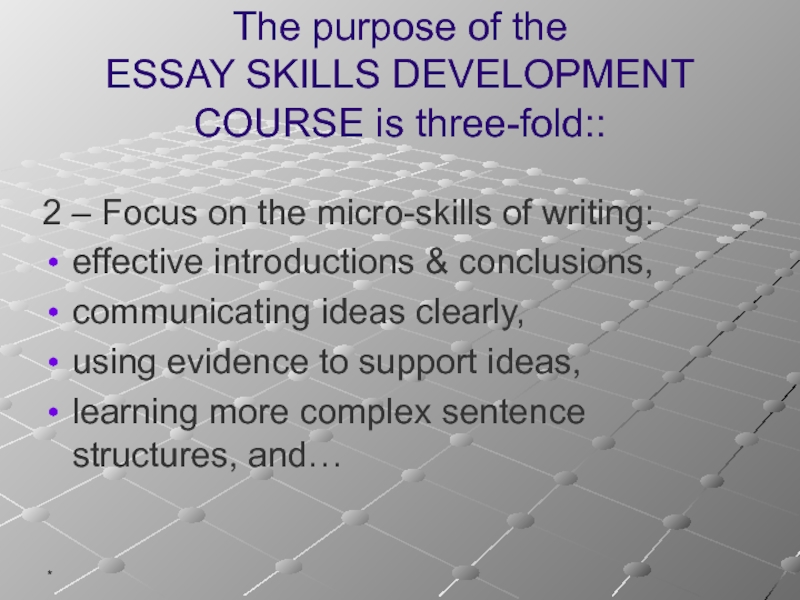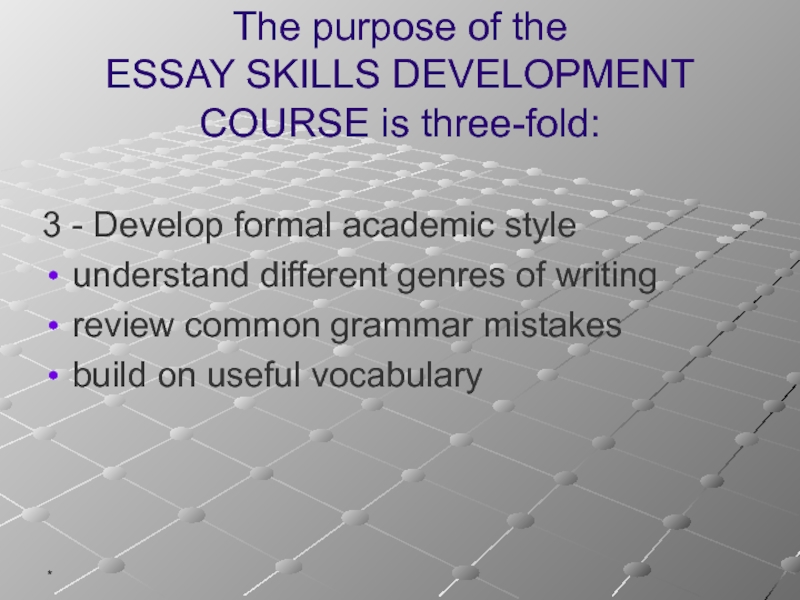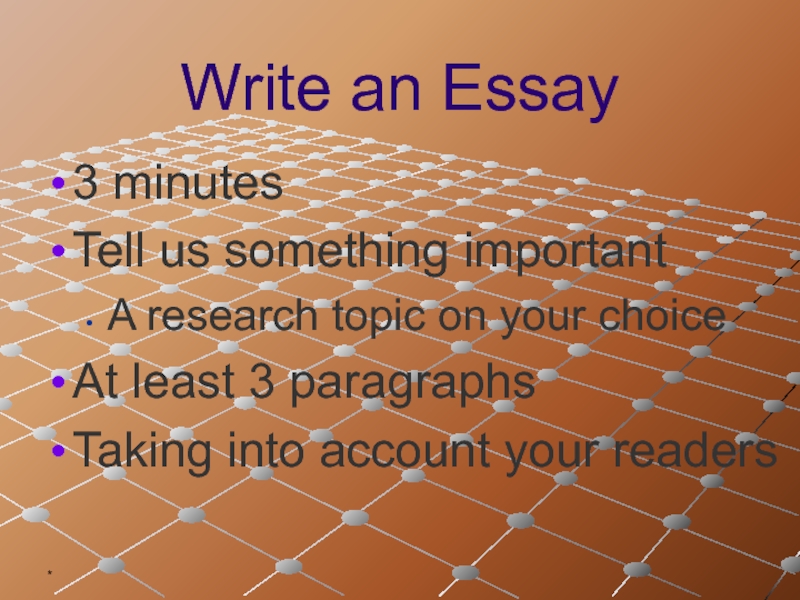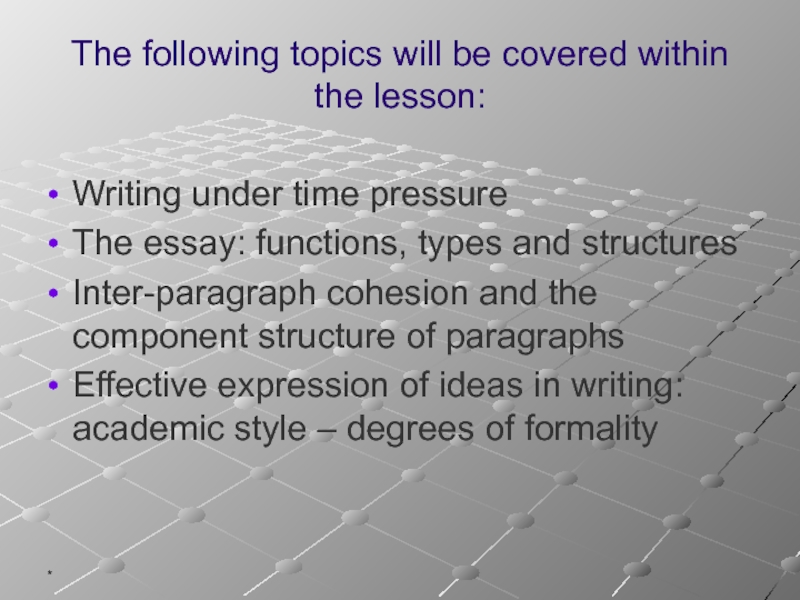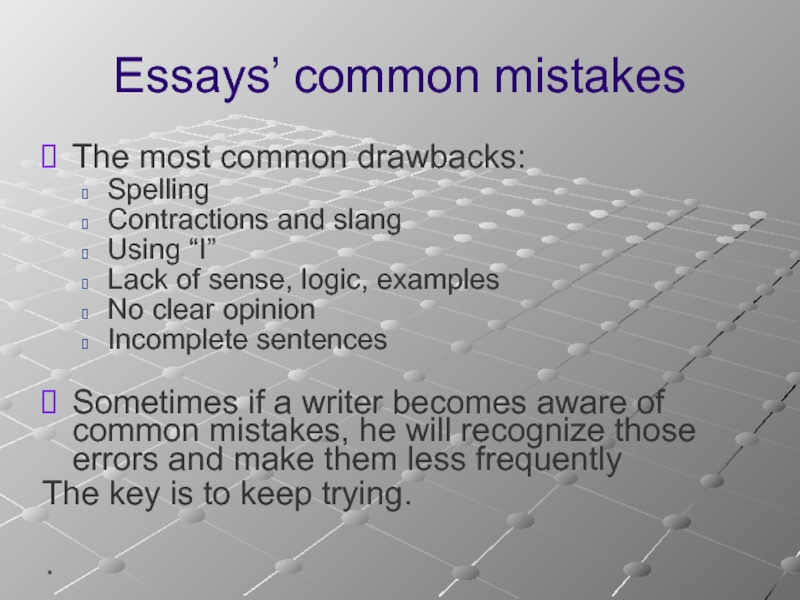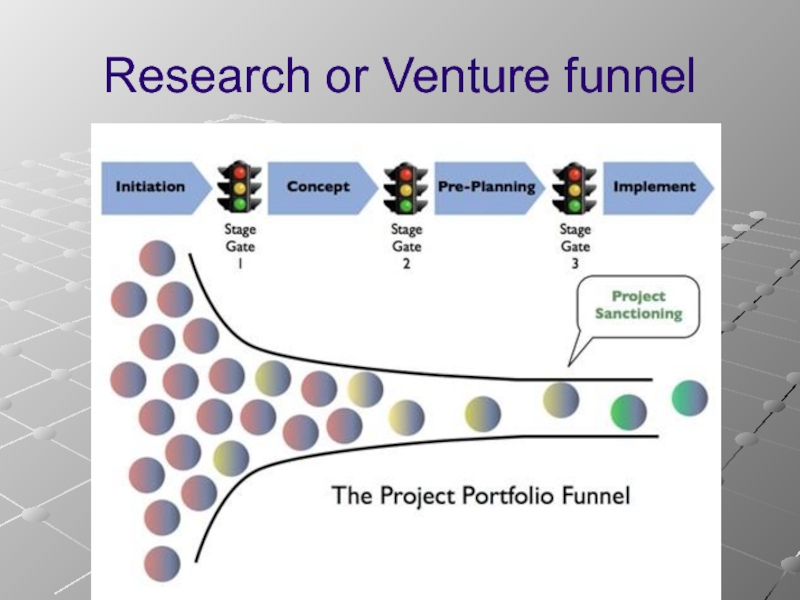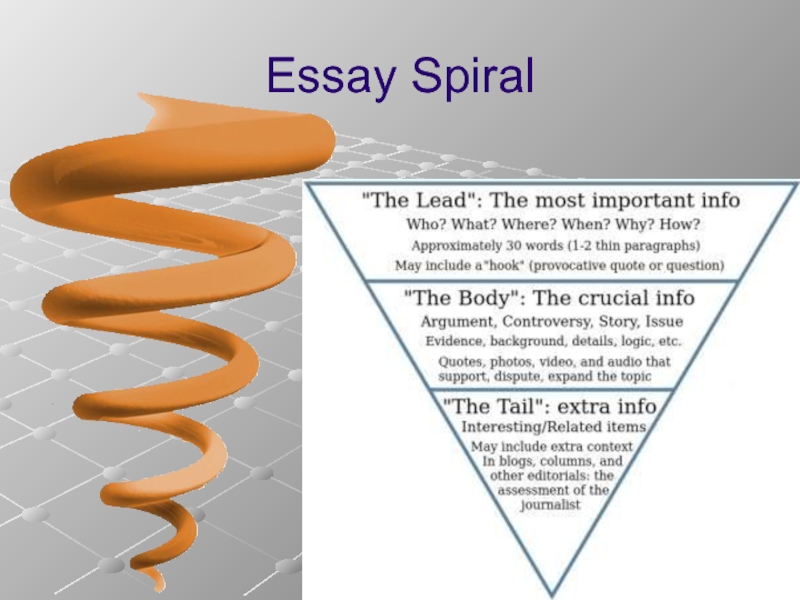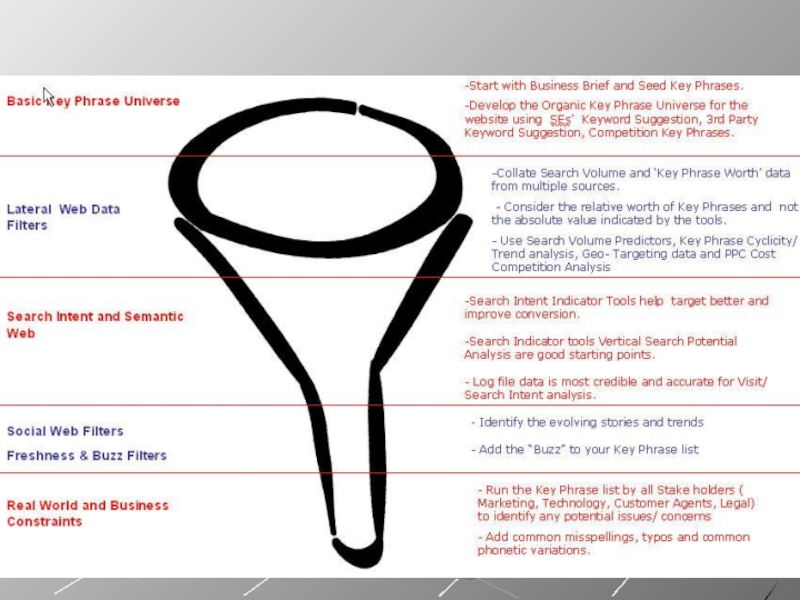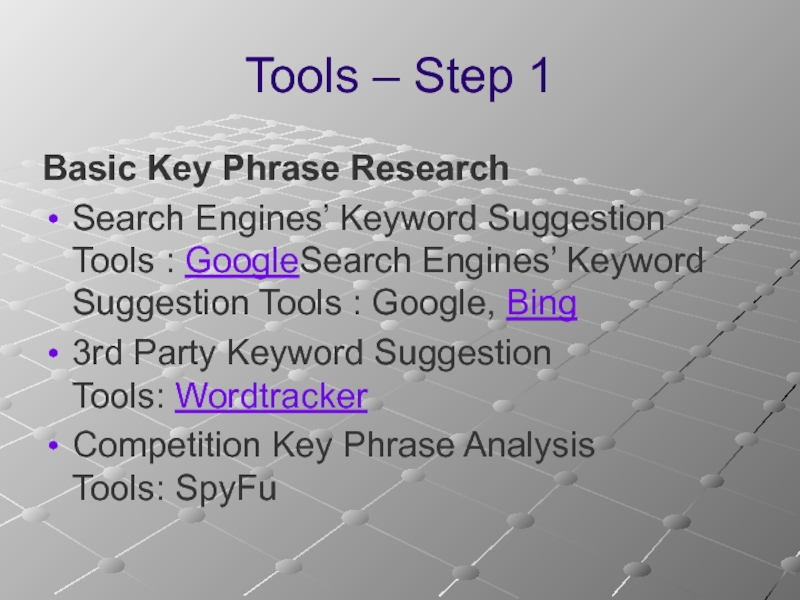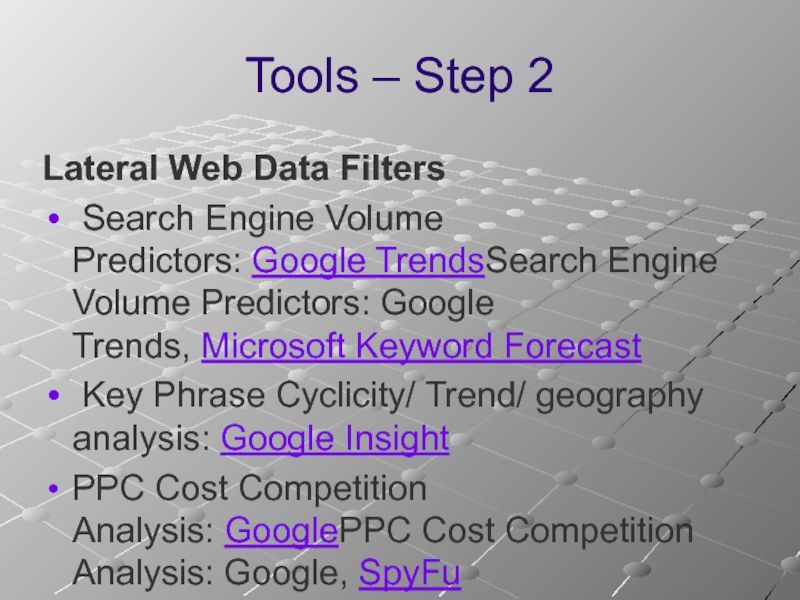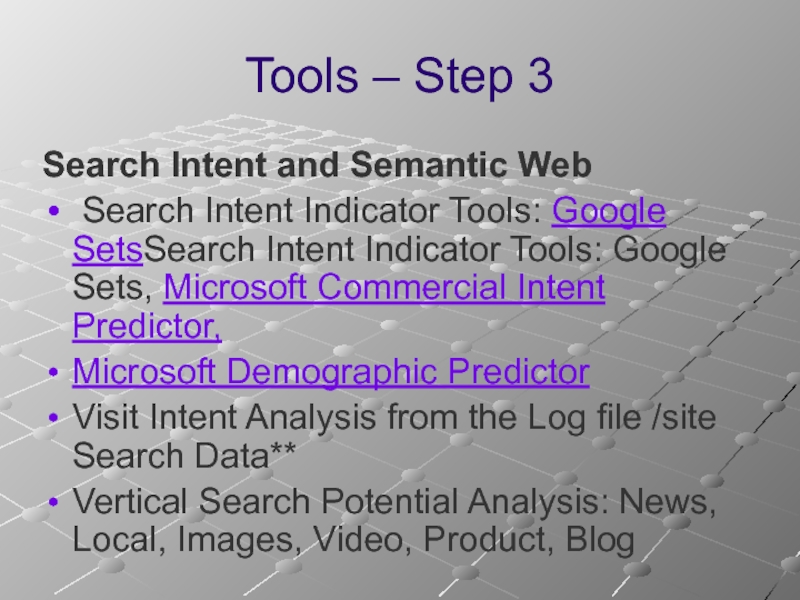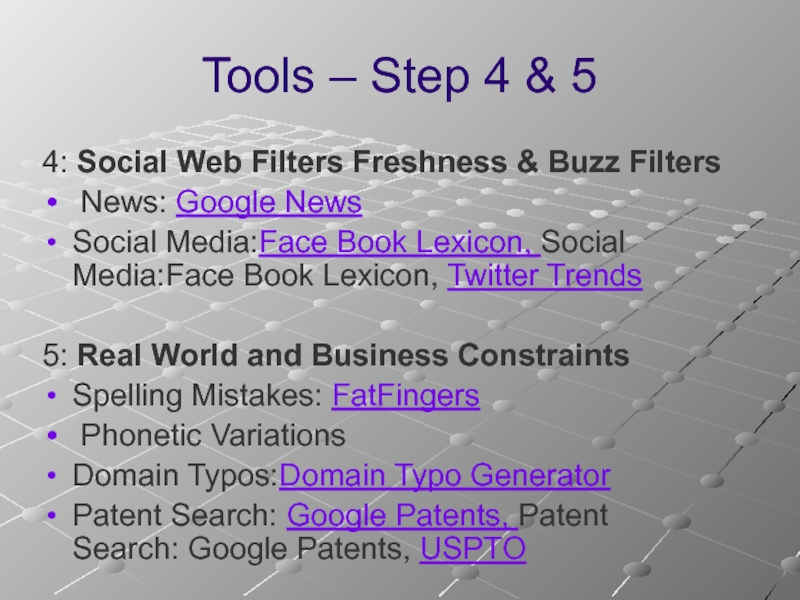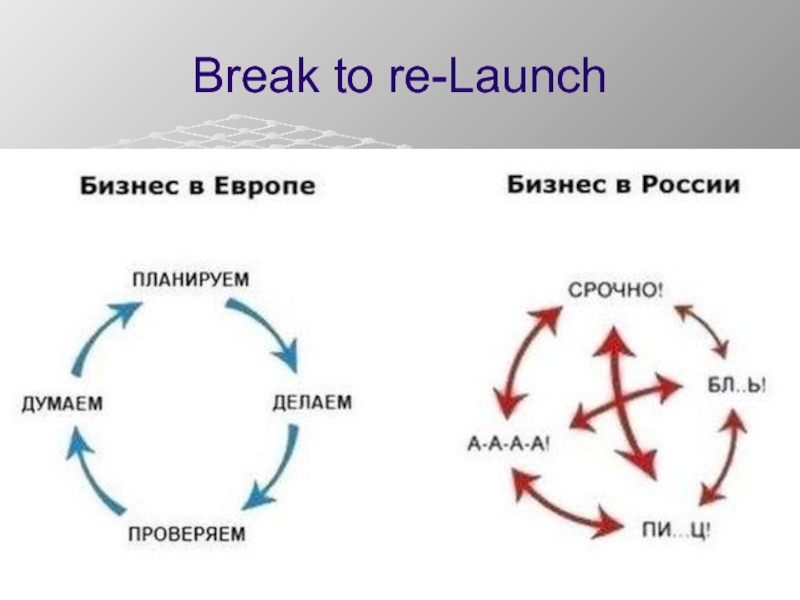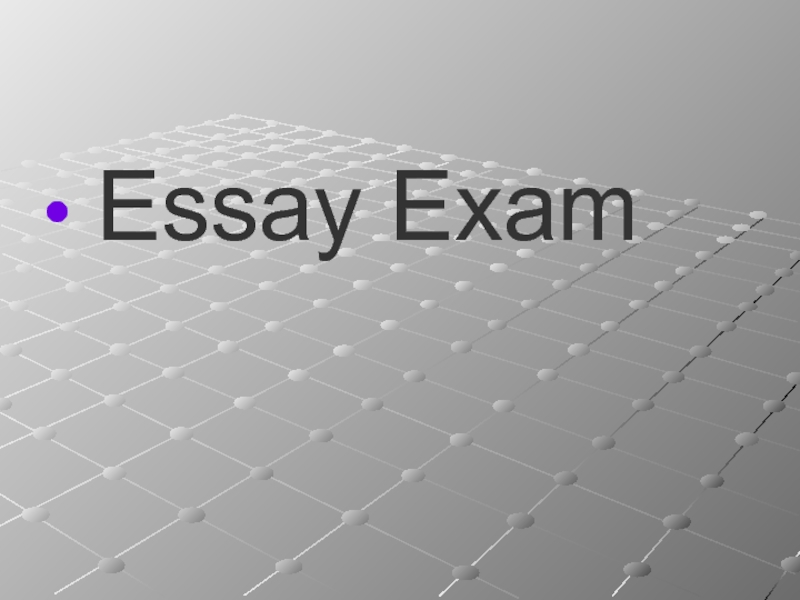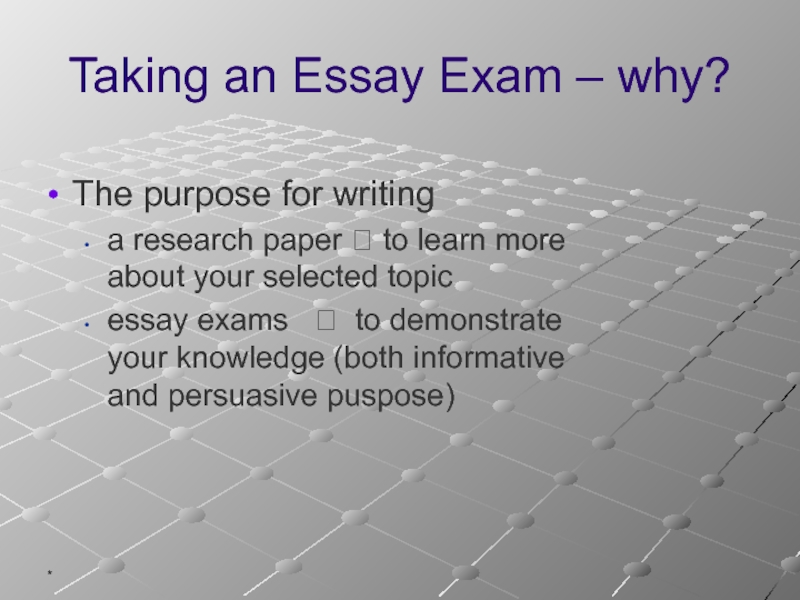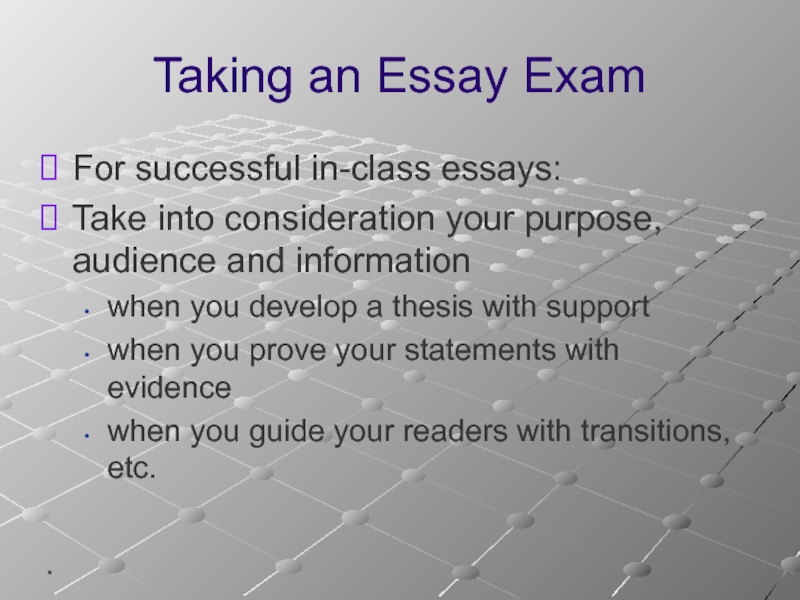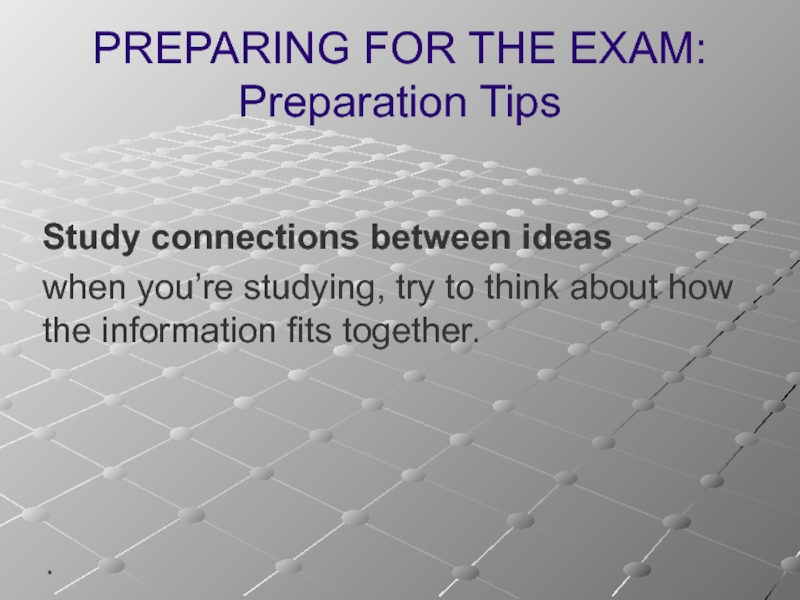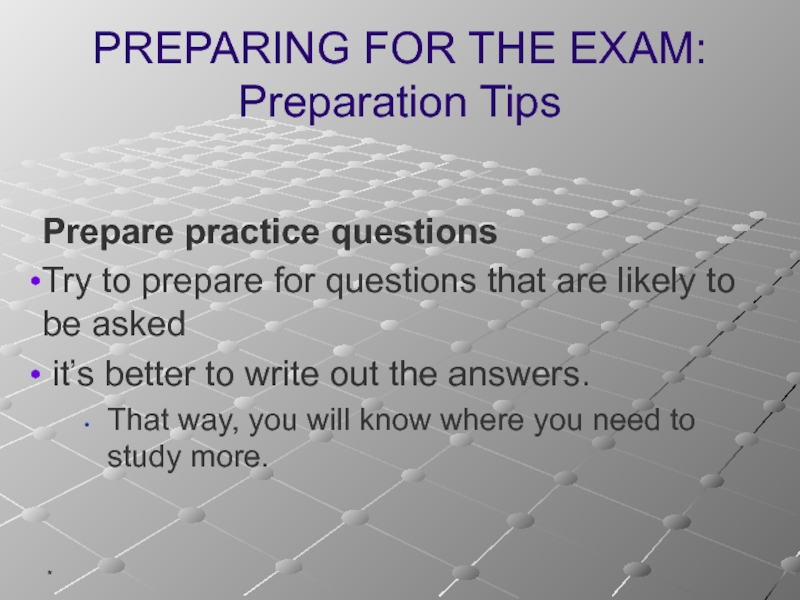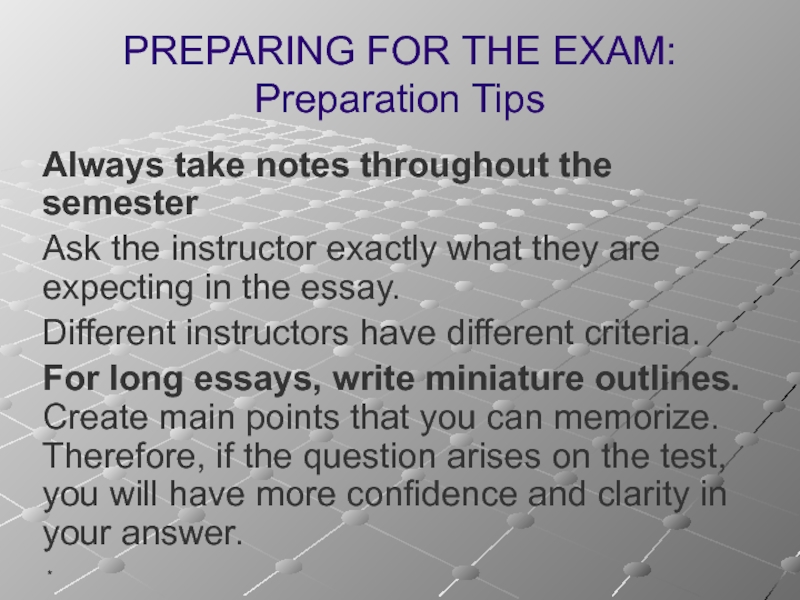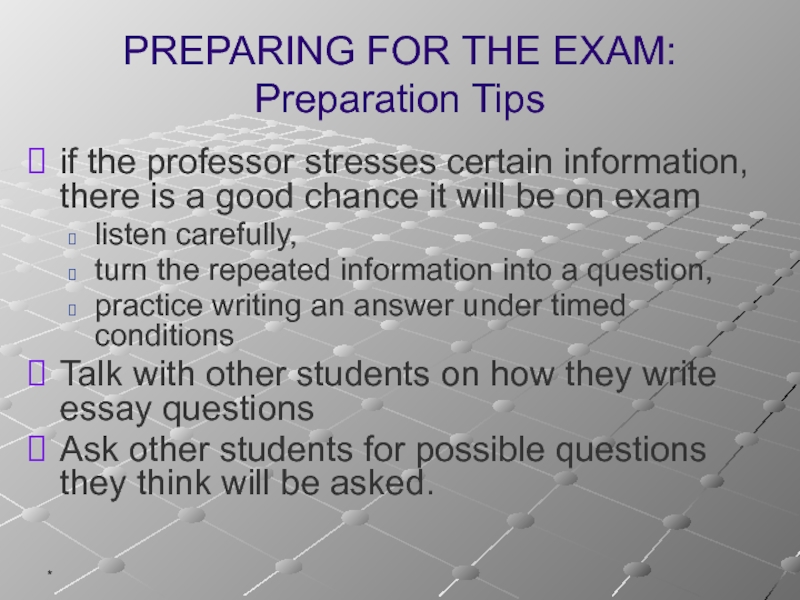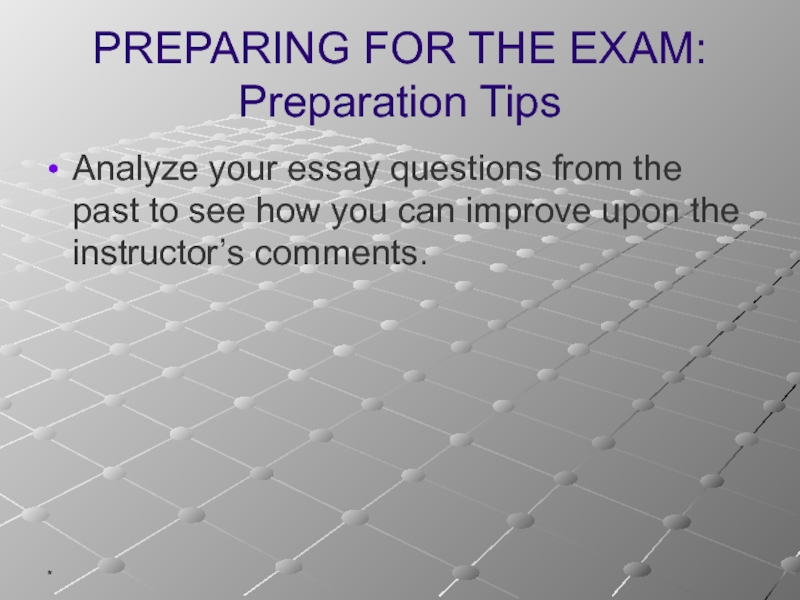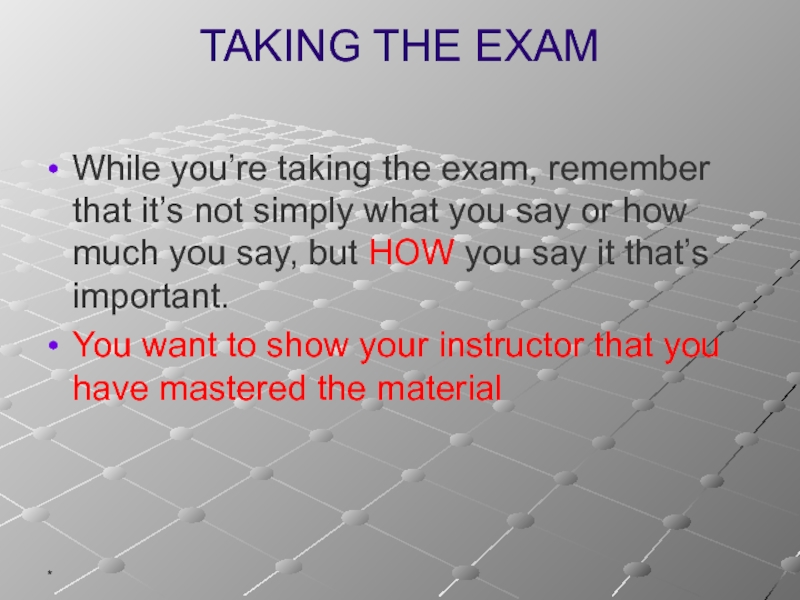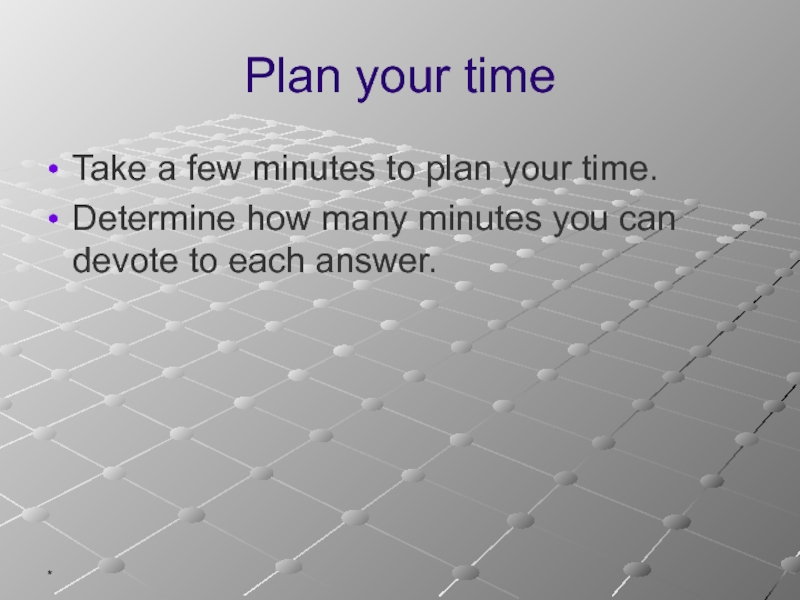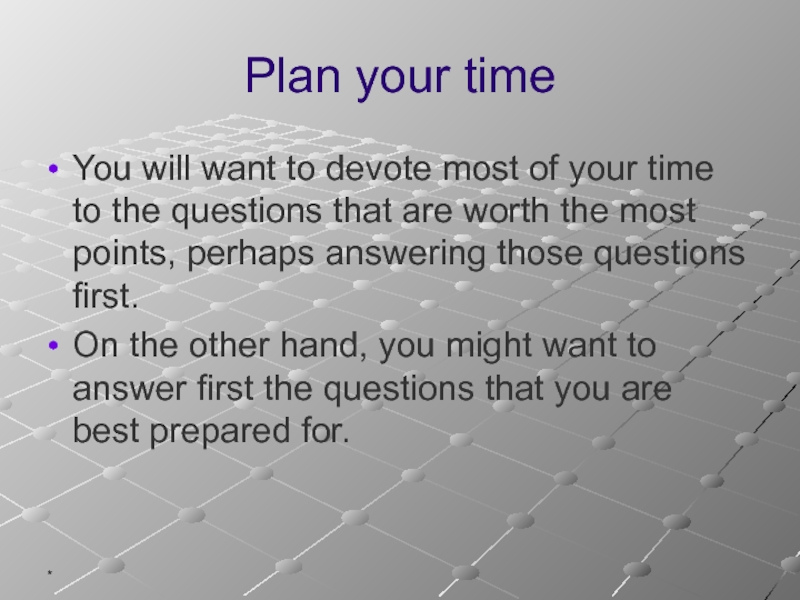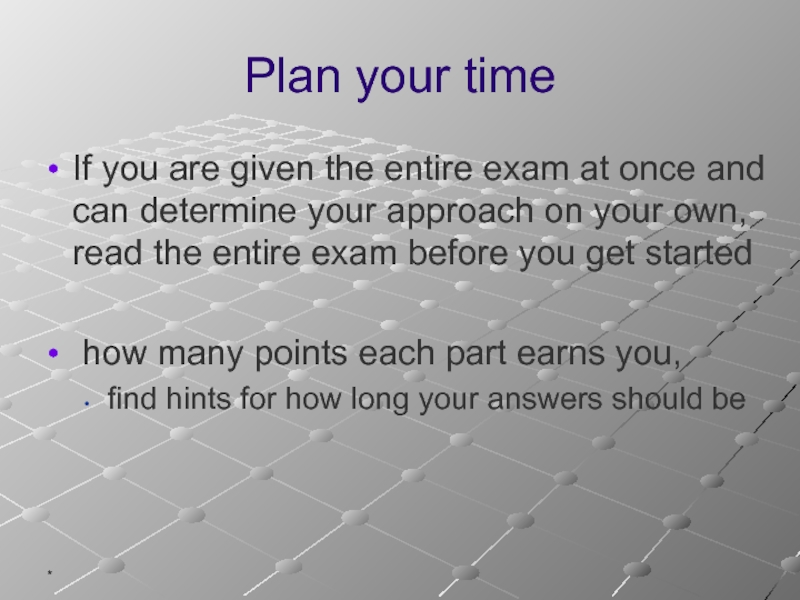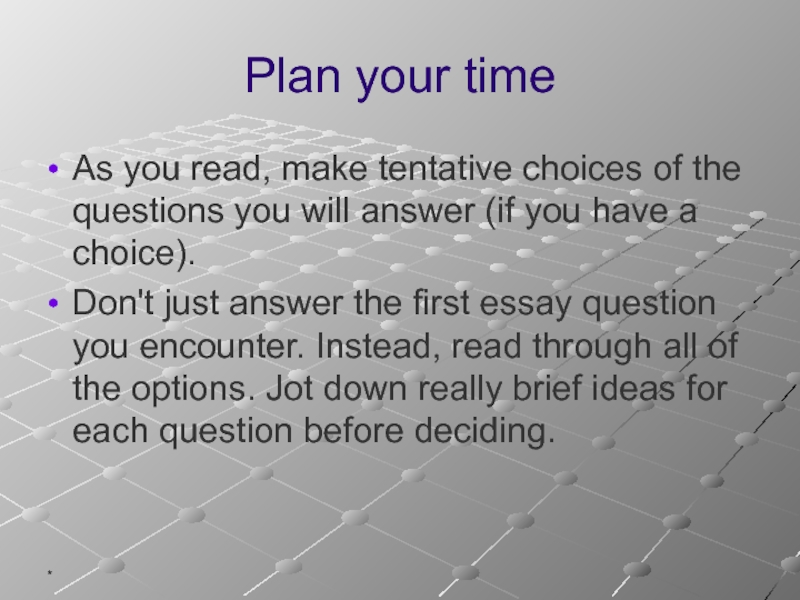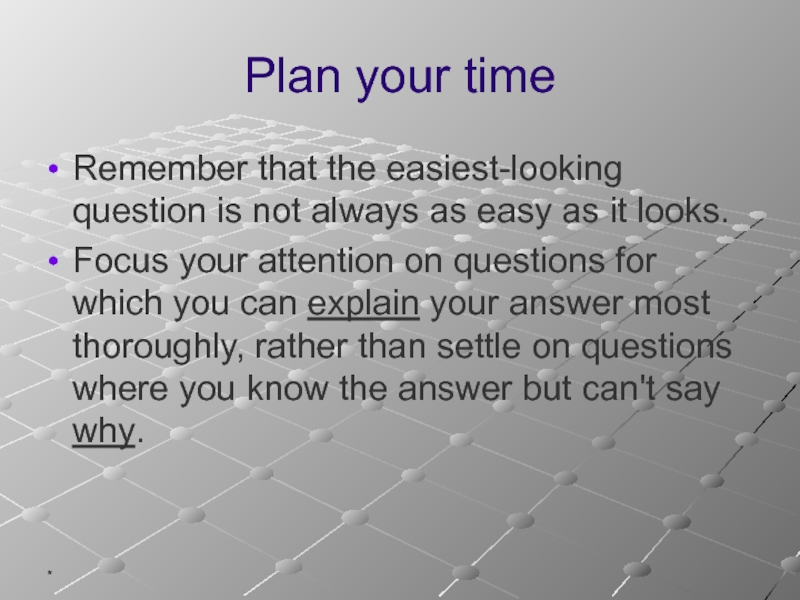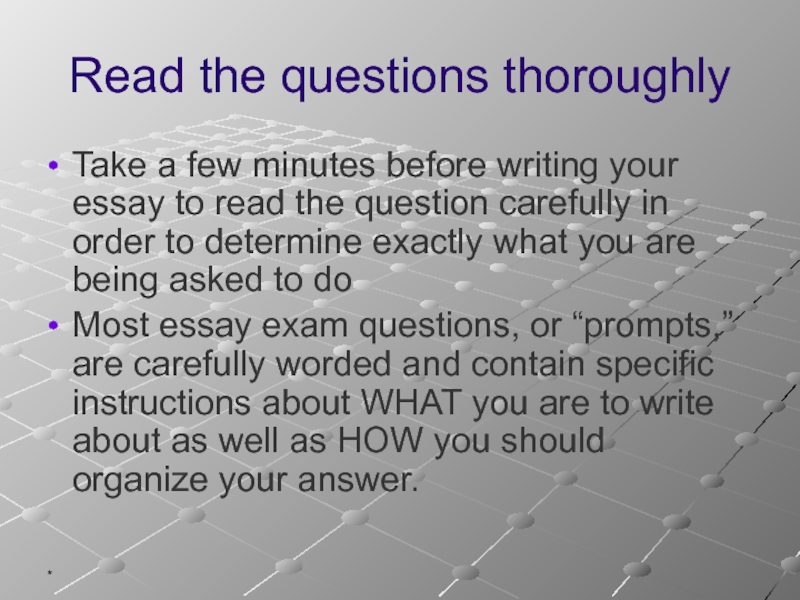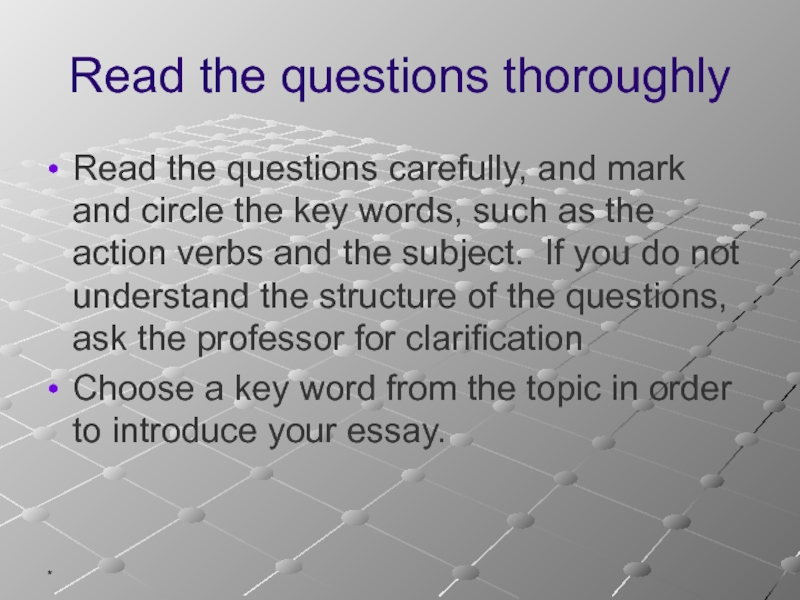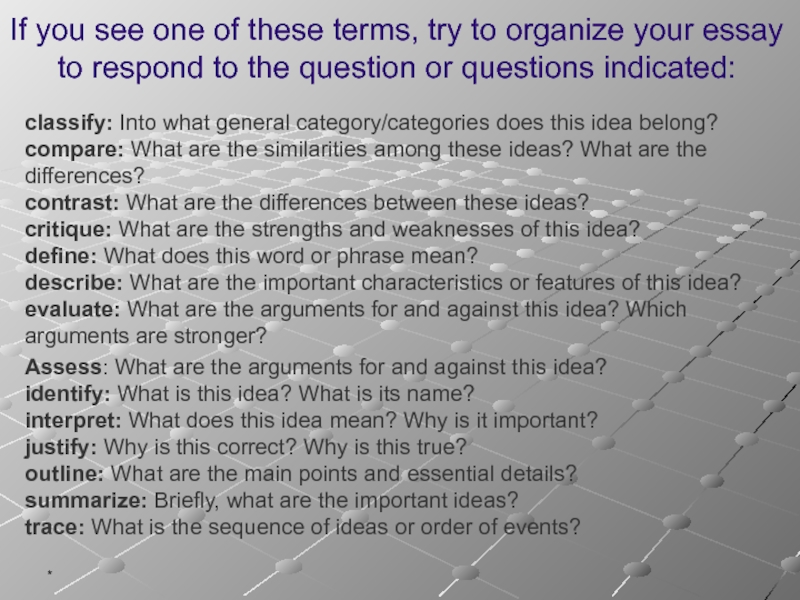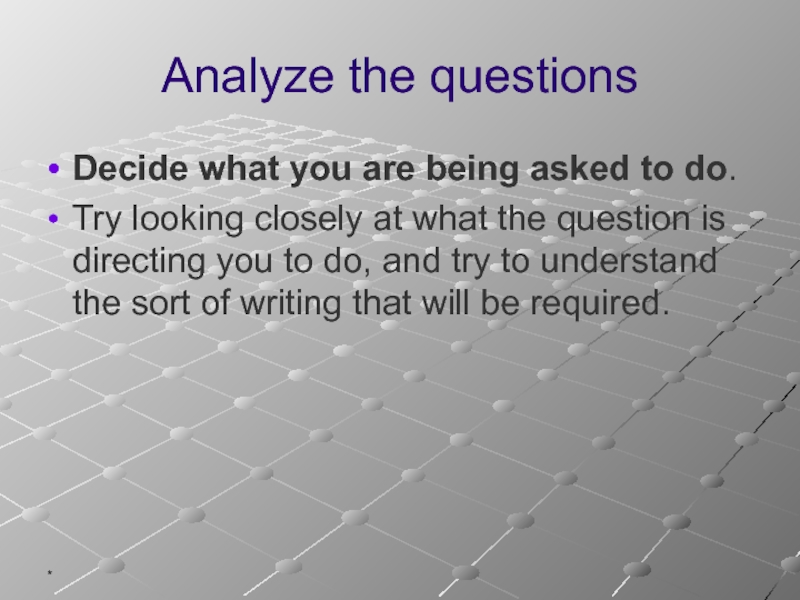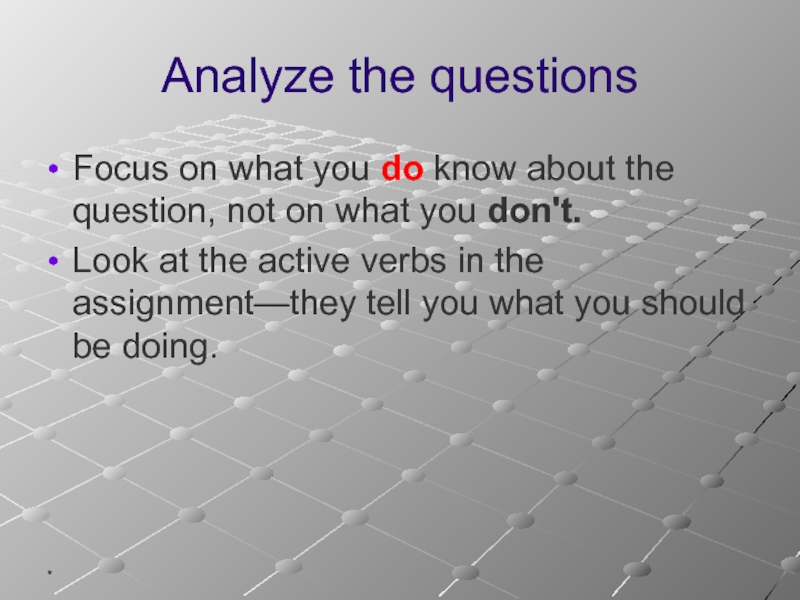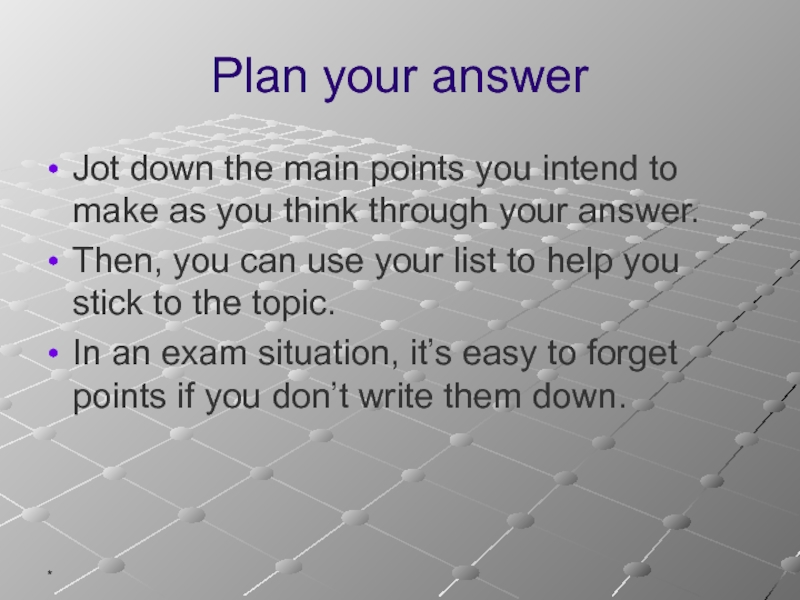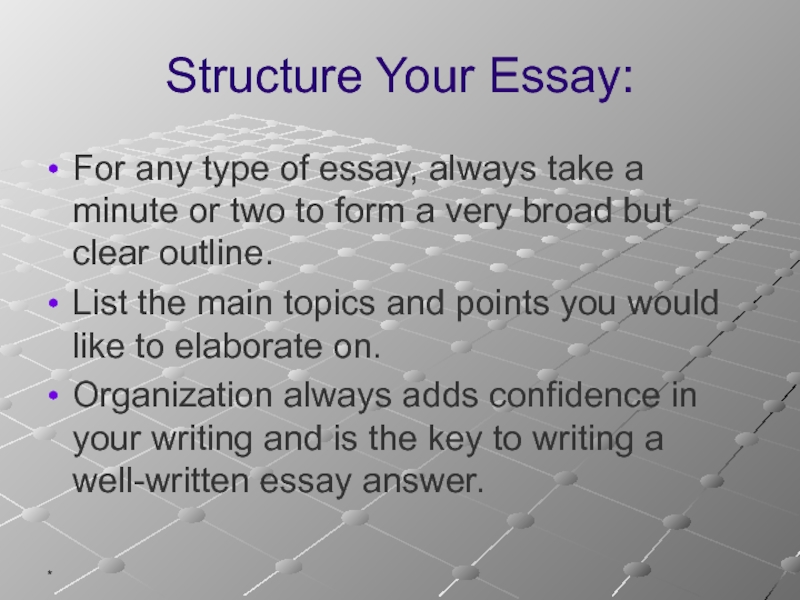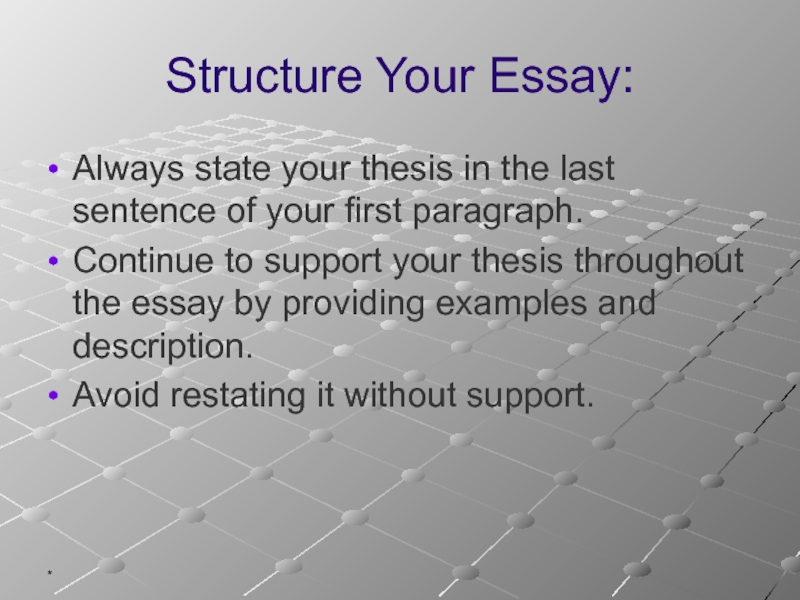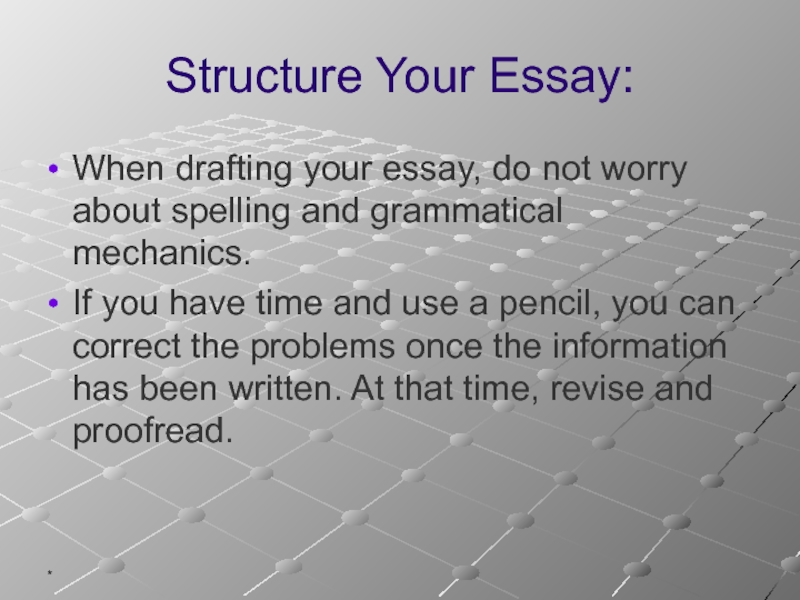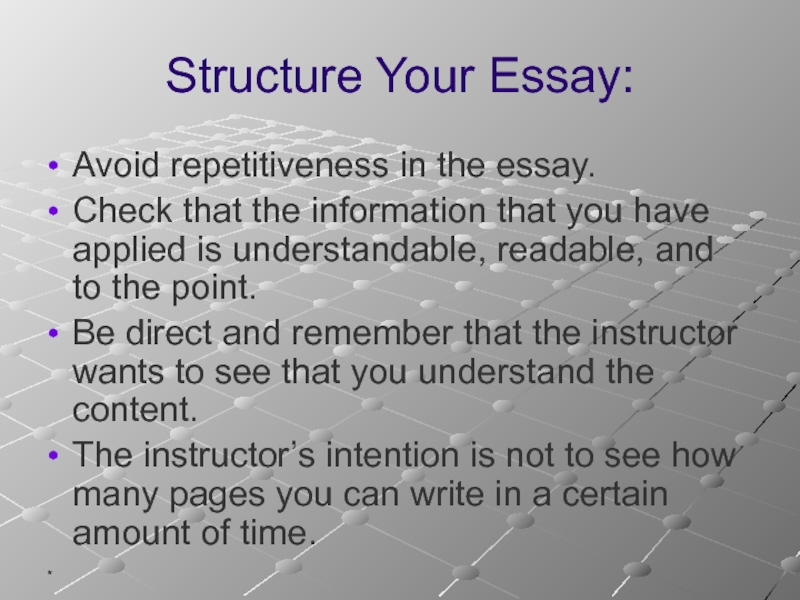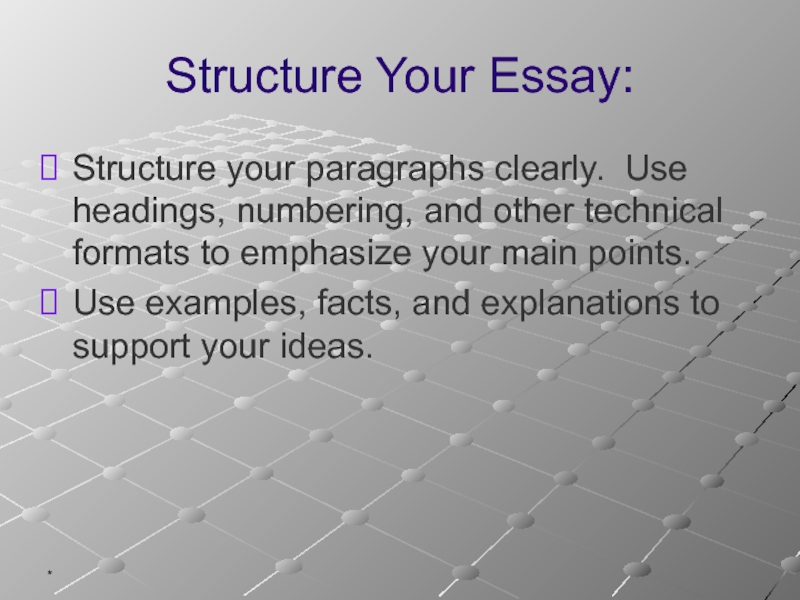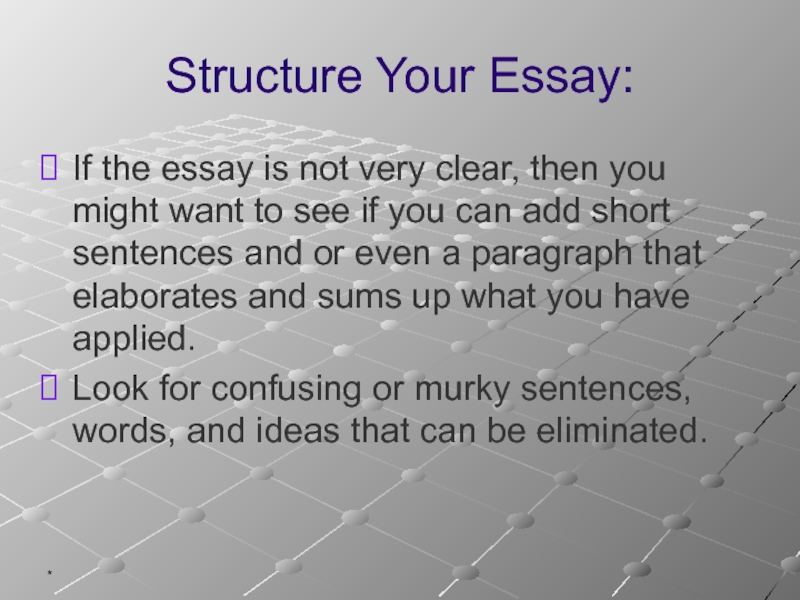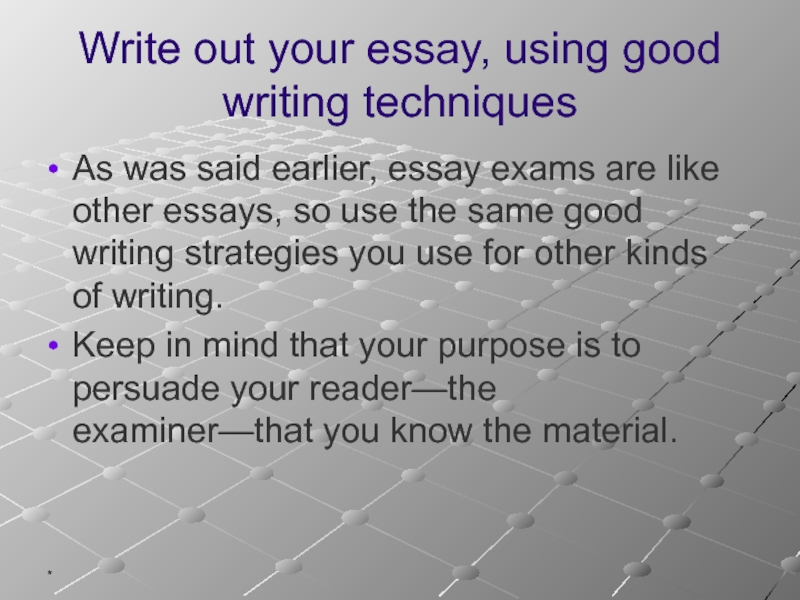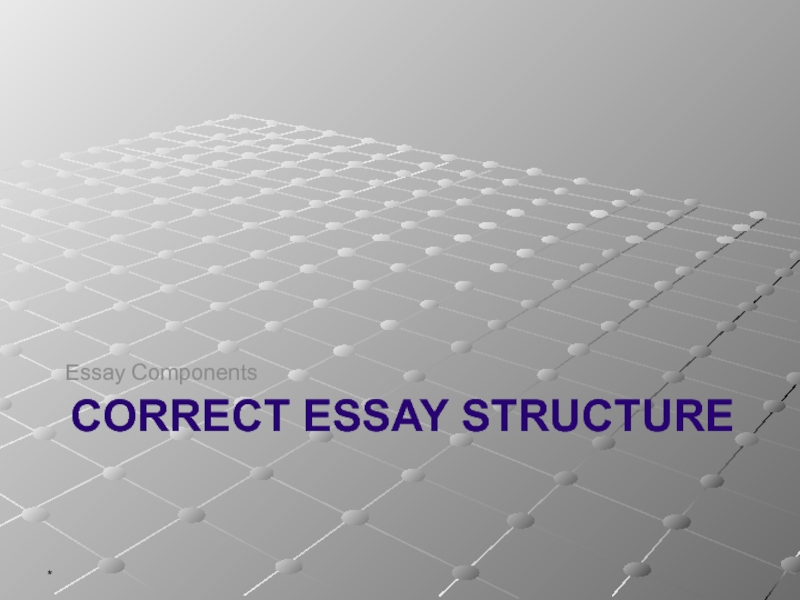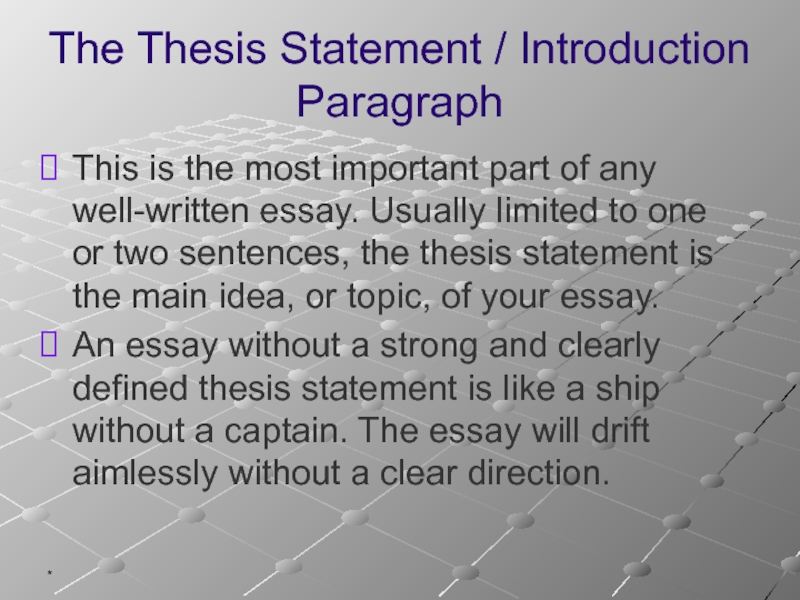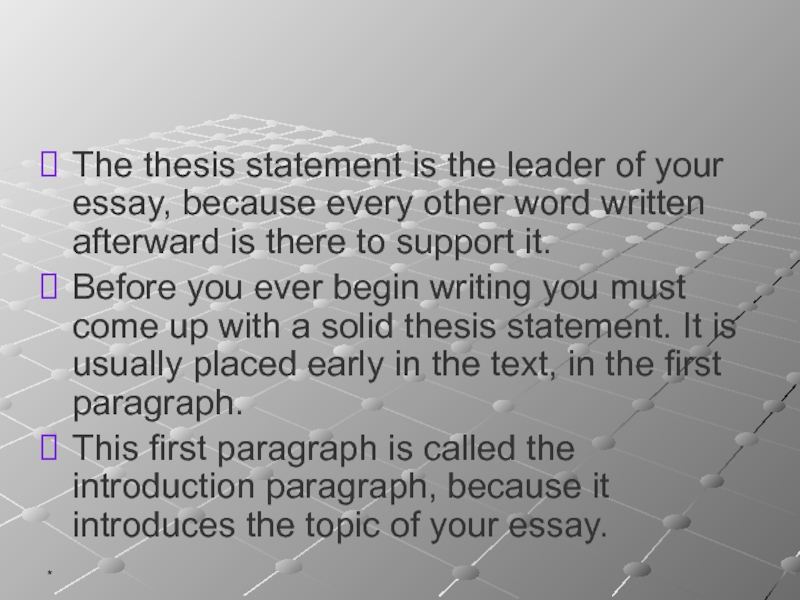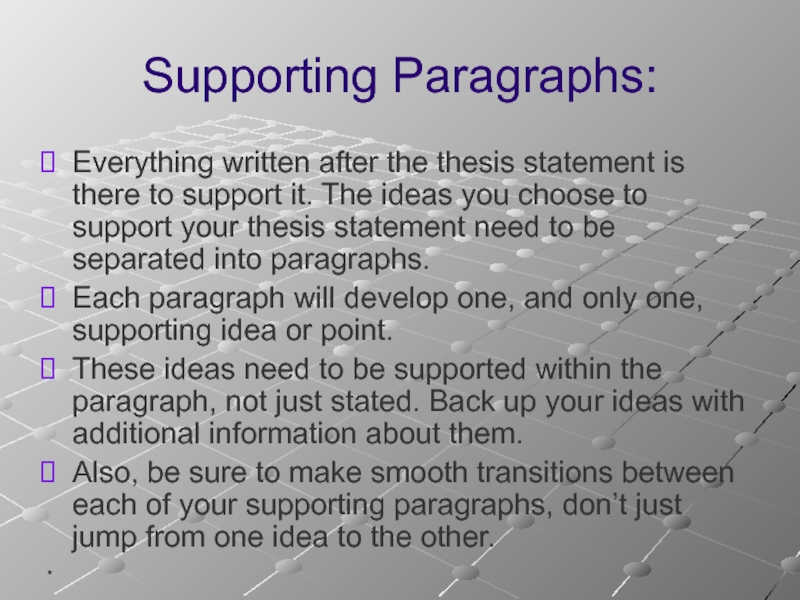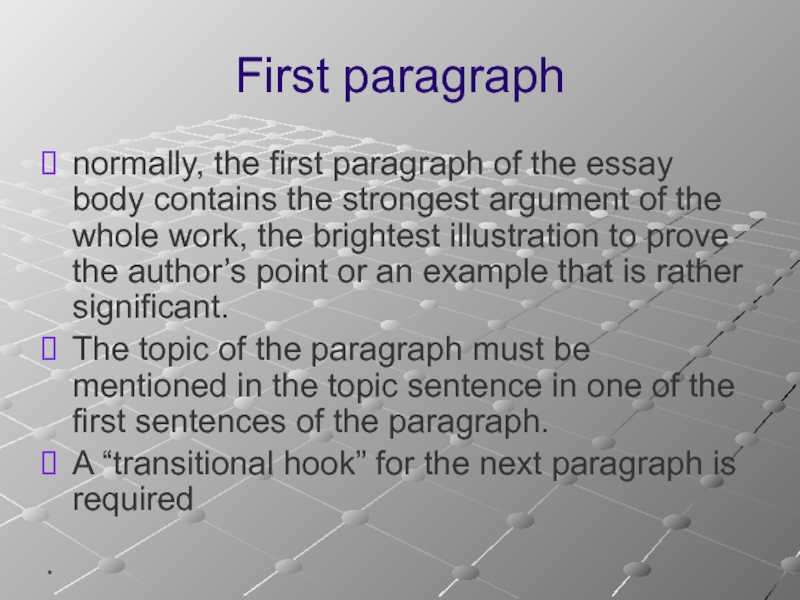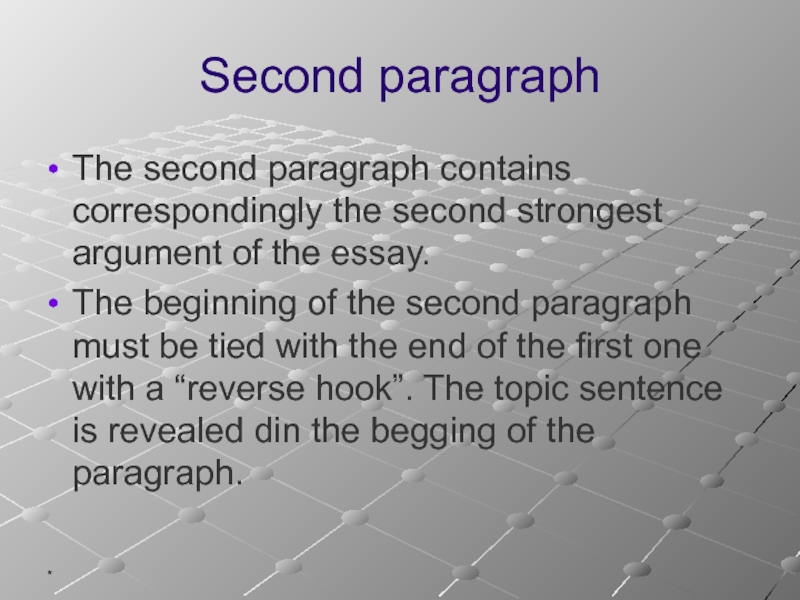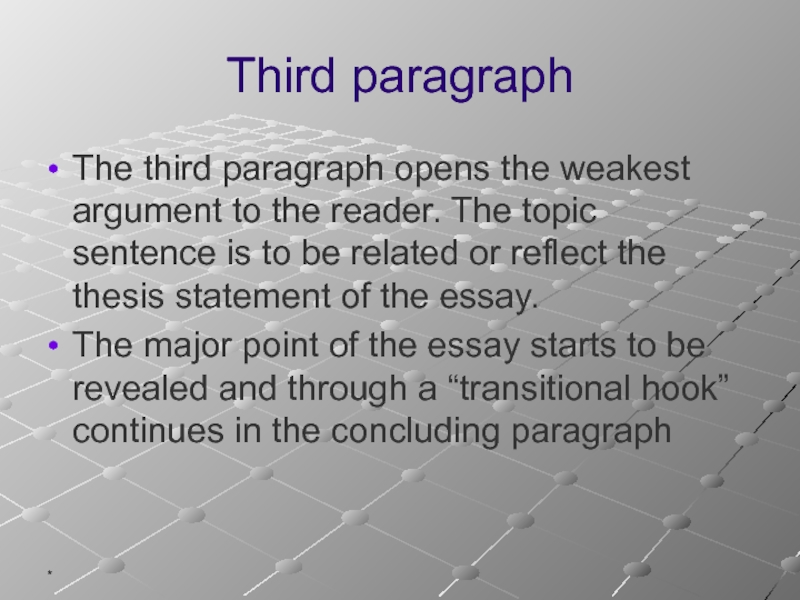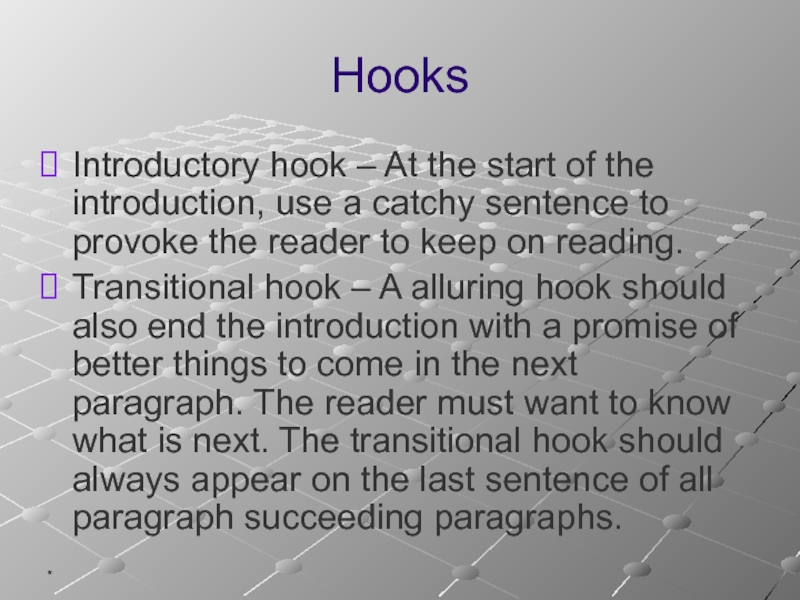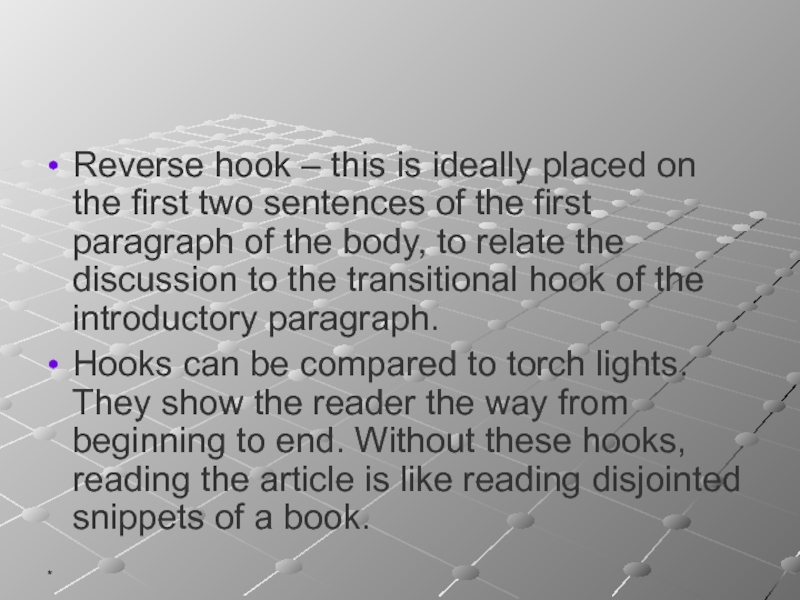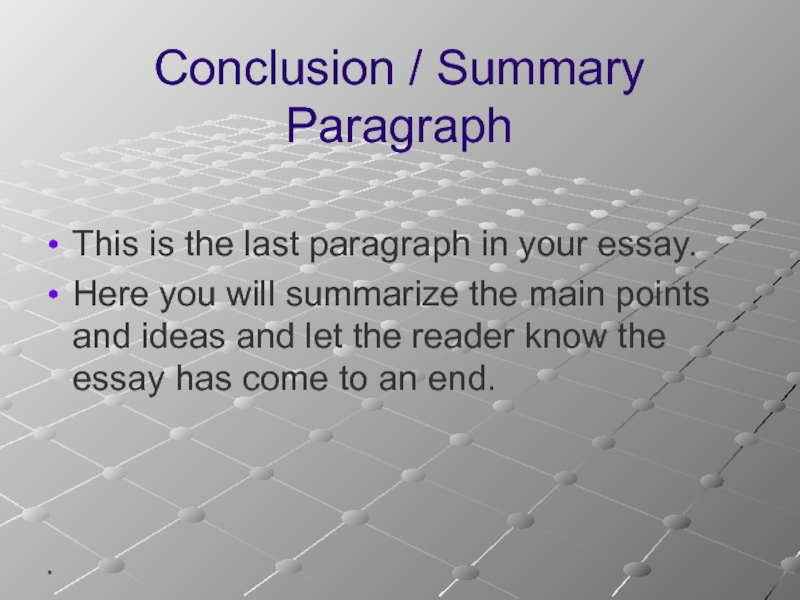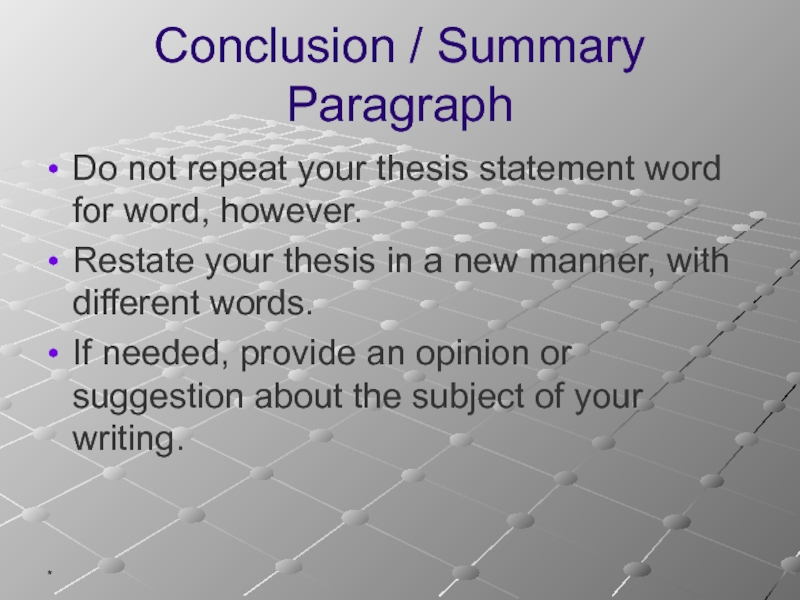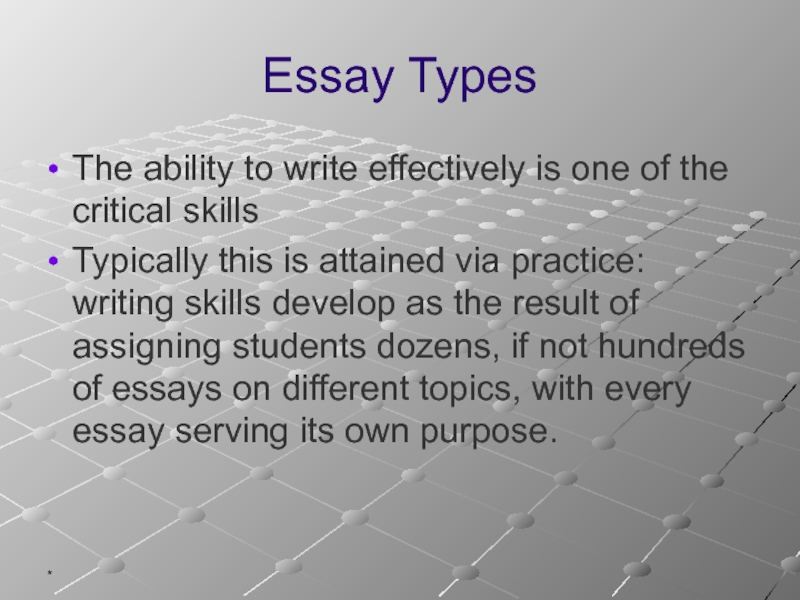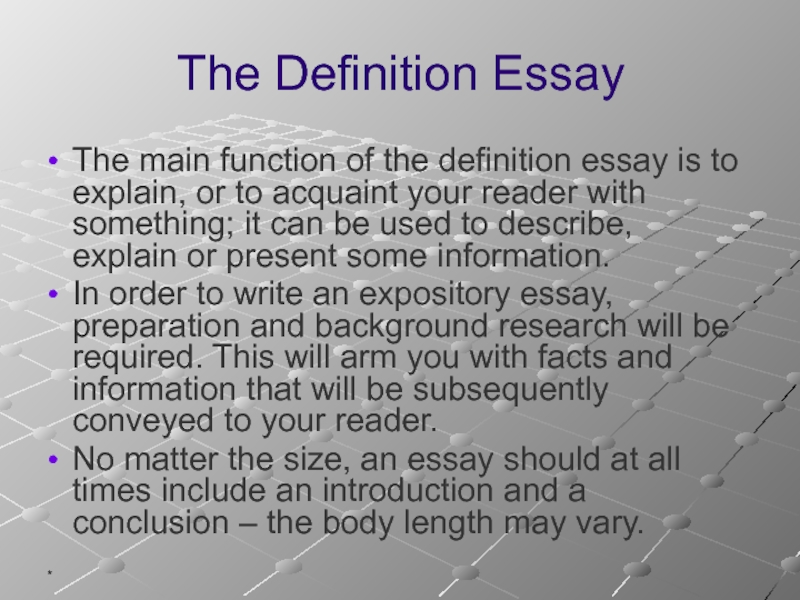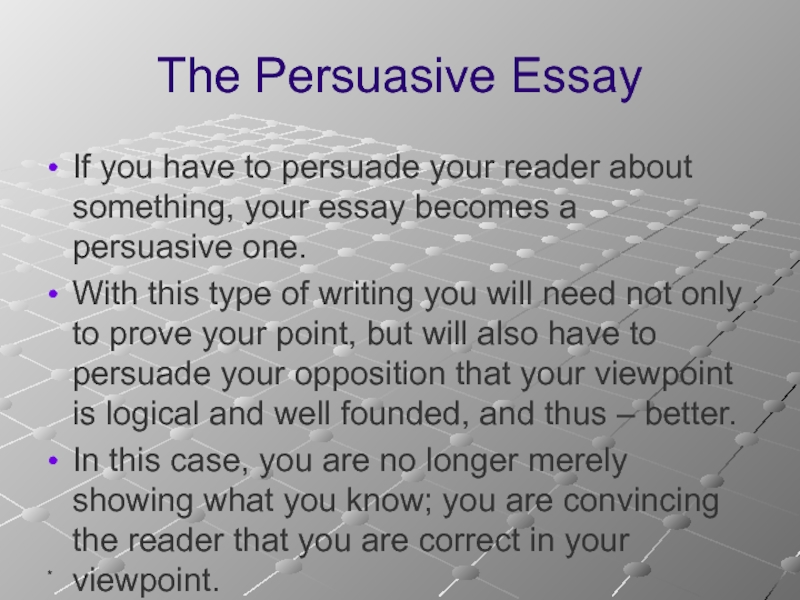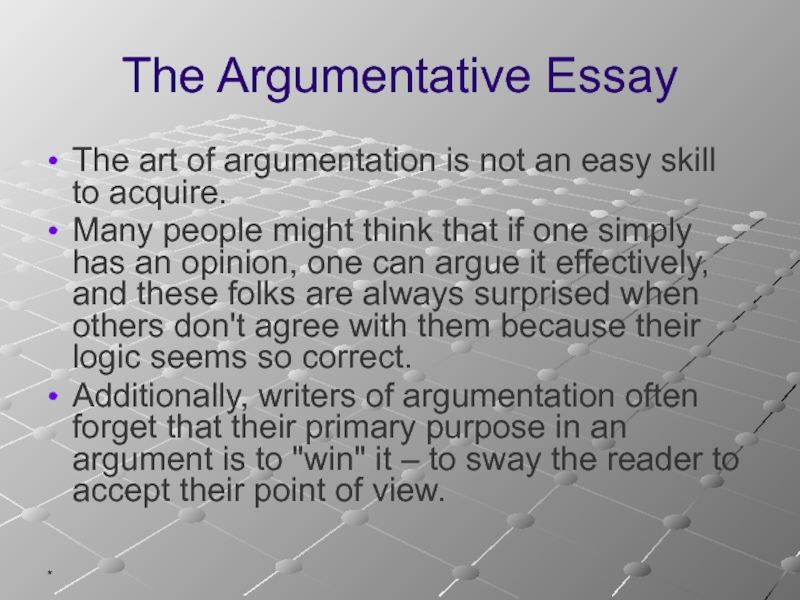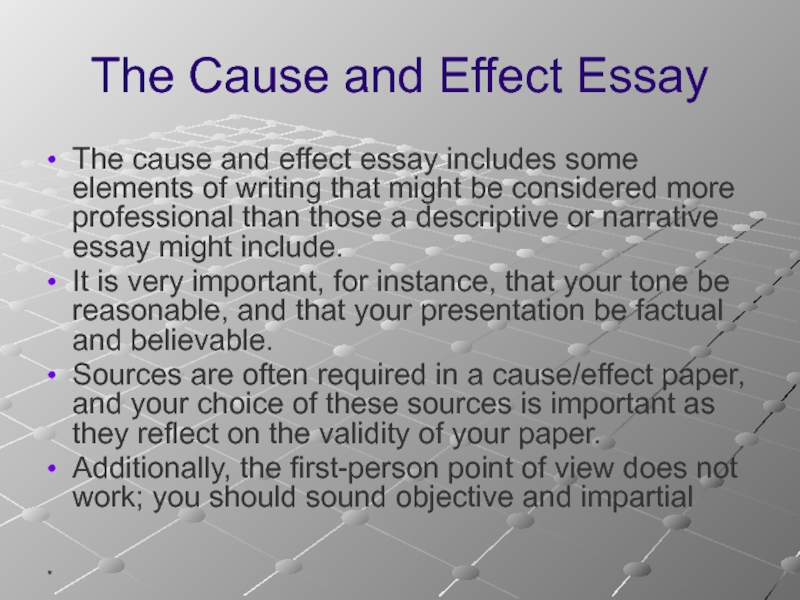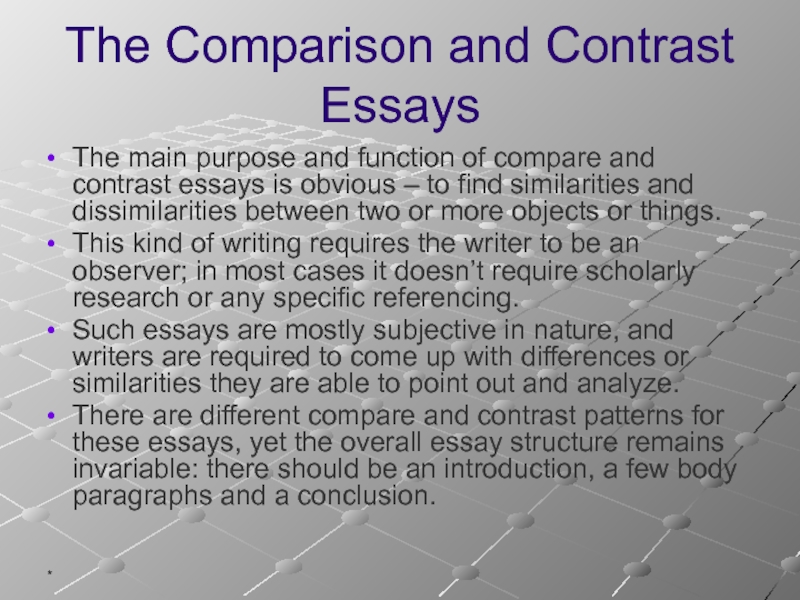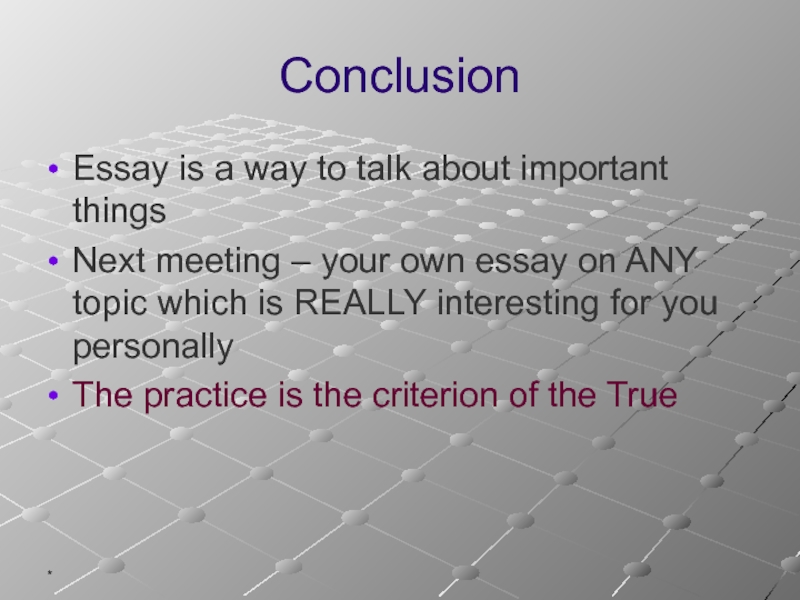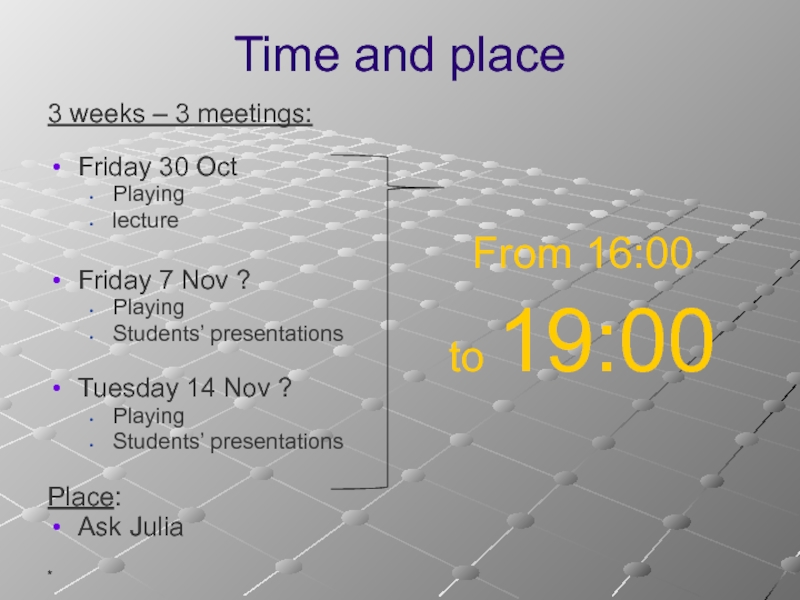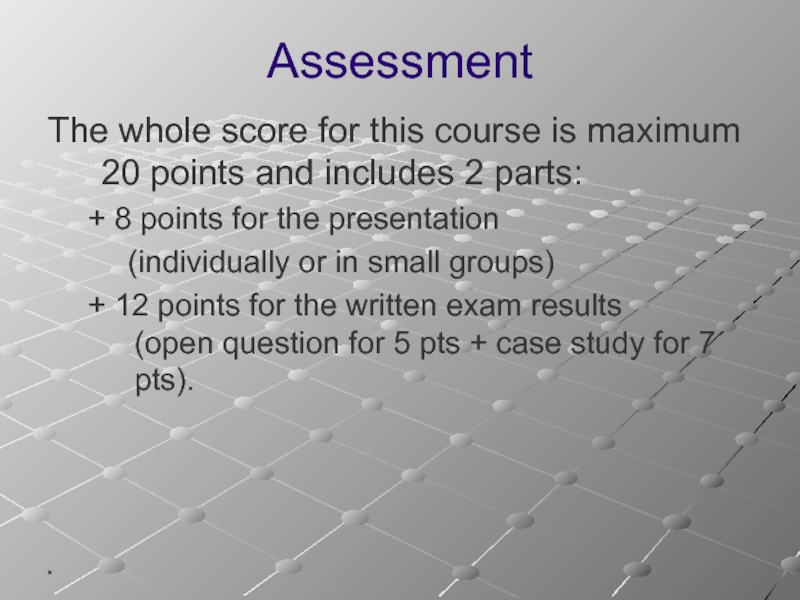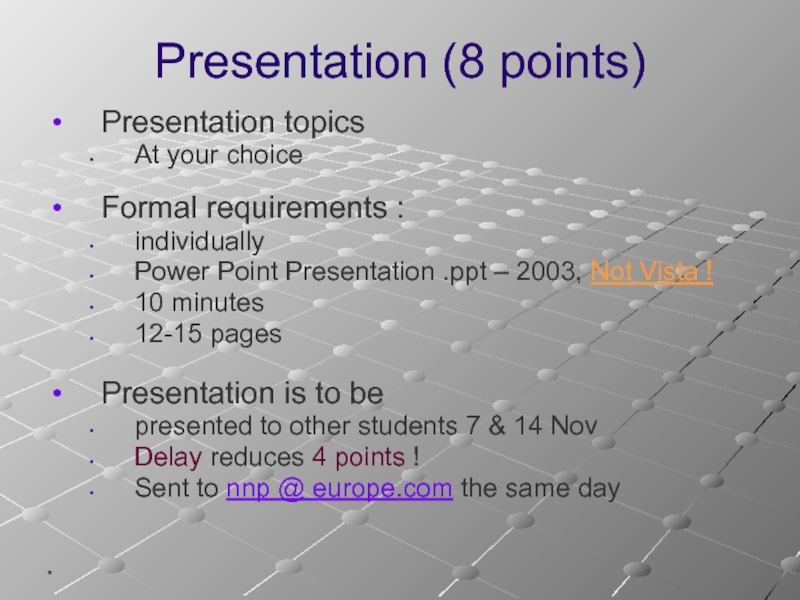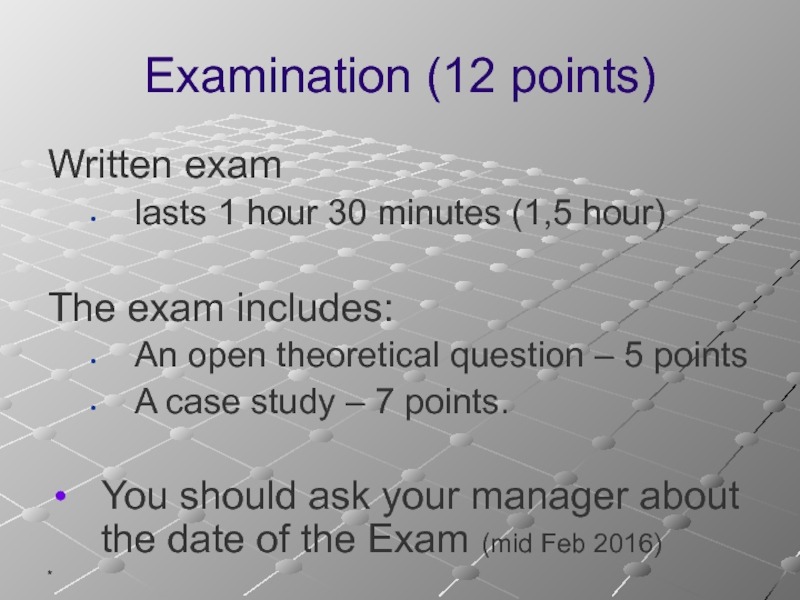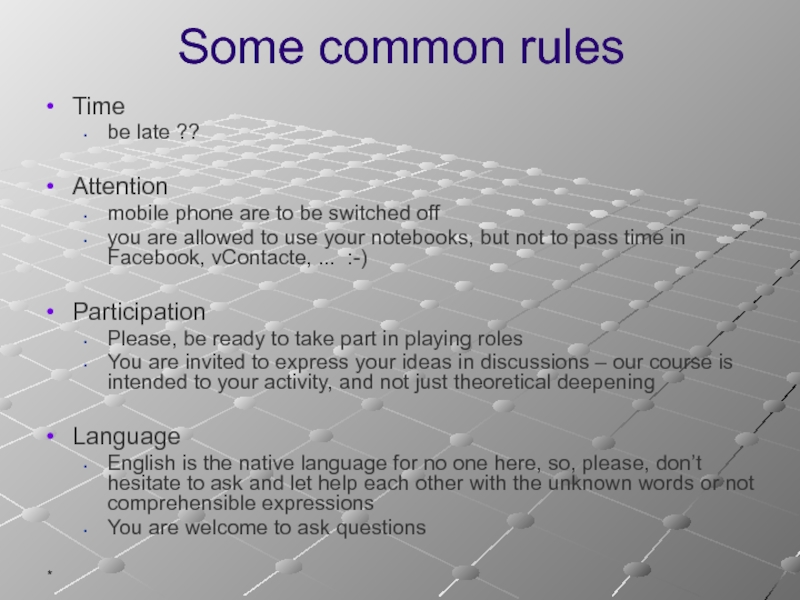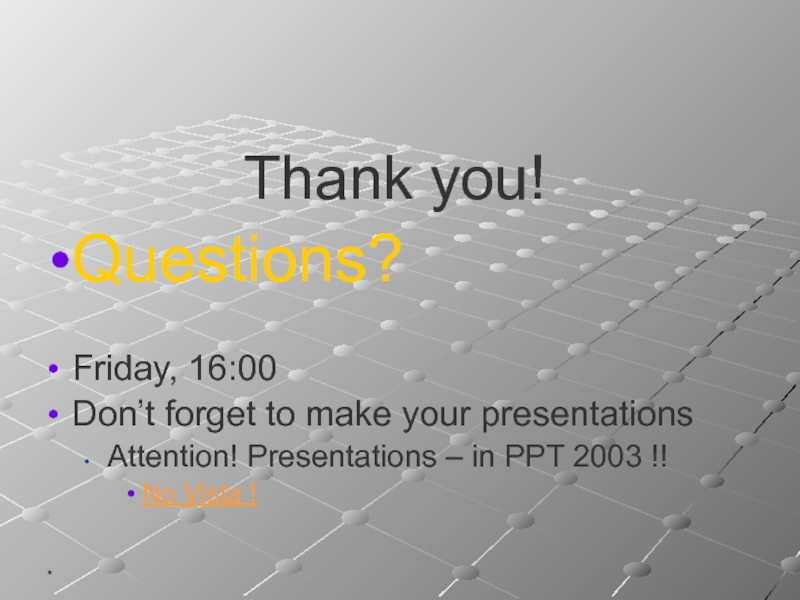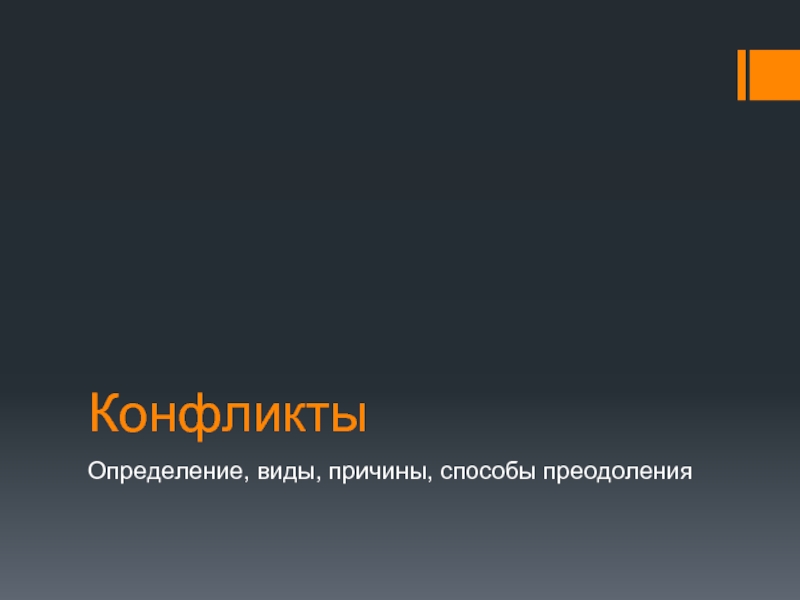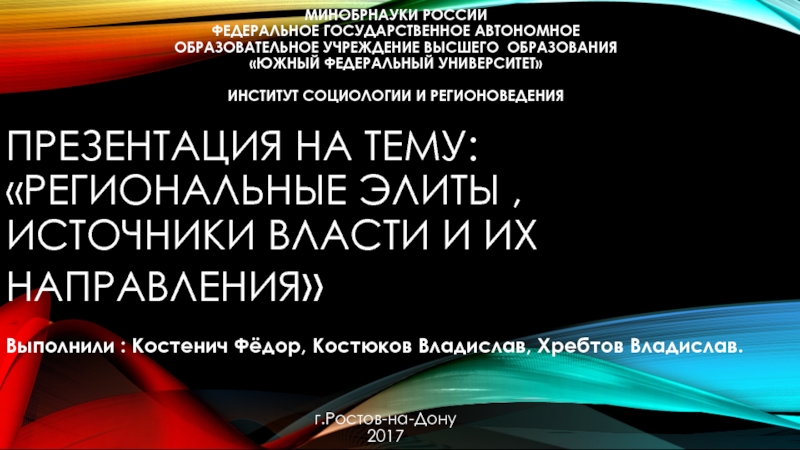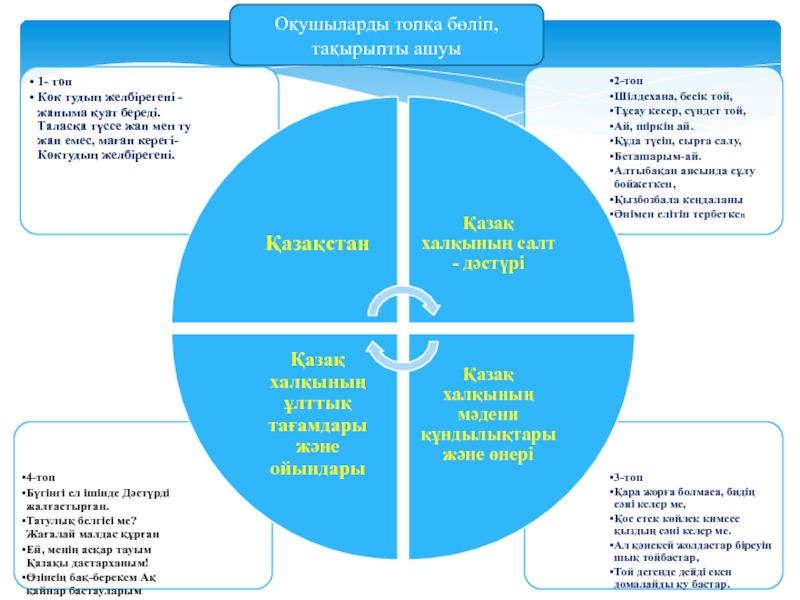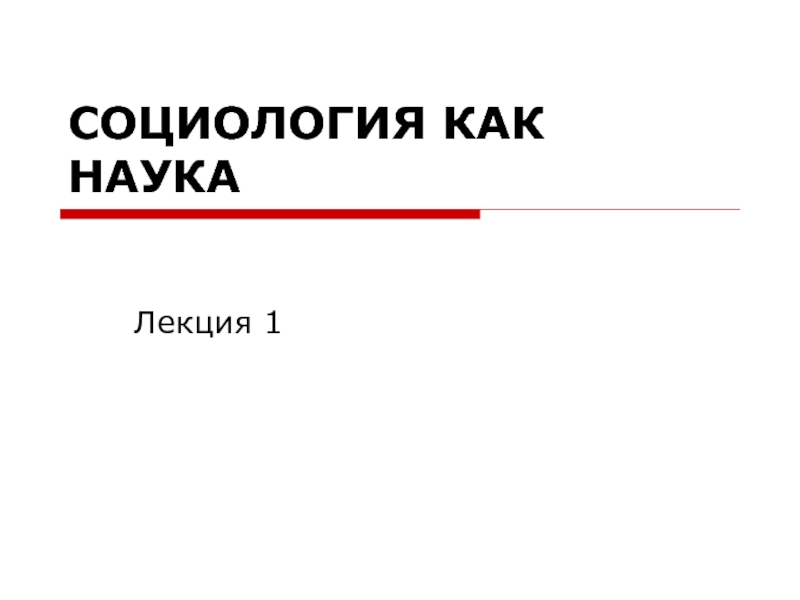- Главная
- Разное
- Дизайн
- Бизнес и предпринимательство
- Аналитика
- Образование
- Развлечения
- Красота и здоровье
- Финансы
- Государство
- Путешествия
- Спорт
- Недвижимость
- Армия
- Графика
- Культурология
- Еда и кулинария
- Лингвистика
- Английский язык
- Астрономия
- Алгебра
- Биология
- География
- Детские презентации
- Информатика
- История
- Литература
- Маркетинг
- Математика
- Медицина
- Менеджмент
- Музыка
- МХК
- Немецкий язык
- ОБЖ
- Обществознание
- Окружающий мир
- Педагогика
- Русский язык
- Технология
- Физика
- Философия
- Химия
- Шаблоны, картинки для презентаций
- Экология
- Экономика
- Юриспруденция
The Professional competences презентация
Содержание
- 1. The Professional competences
- 2. * The Professional competences For: Specialists
- 3. * Results of the course The student
- 4. * Course’s content The topics include
- 5. * Teaching and Studying methods The interactive
- 6. * Let start !
- 7. Methodology 2015 oct 30 Nadezhda
- 8. * The purpose of the ESSAY SKILLS
- 9. * The purpose of the ESSAY SKILLS
- 10. * The purpose of the ESSAY SKILLS
- 11. * Write an Essay 3 minutes Tell
- 12. * The following topics will be covered
- 13. * Essays’ common mistakes The most common
- 14. Research or Venture funnel
- 15. Essay Spiral
- 17. Tools – Step 1 Basic Key Phrase
- 18. Tools – Step 2 Lateral Web Data
- 19. Tools – Step 3 Search Intent and
- 20. Tools – Step 4 & 5 4: Social
- 21. Break to re-Launch
- 22. Essay Exam
- 23. * Taking an Essay Exam – why?
- 24. * Taking an Essay Exam For successful
- 25. * PREPARING FOR THE EXAM: Preparation Tips
- 26. * PREPARING FOR THE EXAM: Preparation Tips
- 27. * PREPARING FOR THE EXAM: Preparation Tips
- 28. * PREPARING FOR THE EXAM: Preparation Tips
- 29. * PREPARING FOR THE EXAM: Preparation Tips
- 30. * TAKING THE EXAM While you’re
- 31. * Plan your time Take a few
- 32. * Plan your time You will want
- 33. * Plan your time If you are
- 34. * Plan your time As you read,
- 35. * Plan your time Remember that the
- 36. * Read the questions thoroughly Take
- 37. * Read the questions thoroughly Read
- 38. * If you see one of these
- 39. * Analyze the questions Decide what you
- 40. * Analyze the questions Focus on what
- 41. * Plan your answer Jot down the
- 42. * Structure Your Essay: For any
- 43. * Structure Your Essay: Always state
- 44. * Structure Your Essay: When drafting
- 45. * Structure Your Essay: Avoid repetitiveness
- 46. * Structure Your Essay: Structure your
- 47. * Structure Your Essay: If the
- 48. * Write out your essay, using good
- 49. * CORRECT ESSAY STRUCTURE Essay Components
- 50. * The Thesis Statement / Introduction Paragraph
- 51. * The thesis statement is the
- 52. * Supporting Paragraphs: Everything written after the
- 53. * First paragraph normally, the first paragraph
- 54. * Second paragraph The second paragraph
- 55. * Third paragraph The third paragraph
- 56. * Hooks Introductory hook – At the
- 57. * Reverse hook – this is
- 58. * Conclusion / Summary Paragraph This is
- 59. * Conclusion / Summary Paragraph Do not
- 60. * Essay Types The ability to write
- 61. * The Definition Essay The main function
- 62. * The Persuasive Essay If you have
- 63. * The Argumentative Essay The art of
- 64. * The Cause and Effect Essay The
- 65. * The Comparison and Contrast Essays The
- 66. * Conclusion Essay is a way to
- 67. * Time and place 3 weeks –
- 68. * Assessment The whole score for this
- 69. * Presentation (8 points) Presentation topics At
- 70. * Examination (12 points) Written exam lasts
- 71. * Some common rules Time be late
- 72. * Thank you! Questions? Friday,
Слайд 1Methodology
Autumn 2015
(ac. year 2015-2016)
Nadezhda N. Pokrovskaia
PhD in Economics ; Doctoral
nnnnp@nnp@europe.com
Слайд 2*
The Professional competences
For:
Specialists and managers –
Apply the best persuading arguments
Present
Win in competition on the labour market
external
Internal – in the company
Students –
Pass all exams with highest scores
Read the material with better understanding of logic and structure
Слайд 3*
Results of the course
The student should :
Get practical skills in
Search information
Make
Write essay
Read and analyse texts
Detect logical mistakes
Fix the priorities
Understand the criteria
Слайд 4*
Course’s content
The topics include 3 parts:
Present information
Writing essay
Making presentations
French logic
Plan détaillé (detailed plan)
Fiche de lecture (annotation)
Research methods
Strategy of examination
Слайд 5*
Teaching and Studying methods
The interactive mode of colloquium
group discussions
role playing
case studies
reporting
Students prepare their presentations, essays, detailed plans, annotations
Слайд 7Methodology
2015 oct 30
Nadezhda N. Pokrovskaia
PhD in Economics ; Doctoral degree in
nnnnp@nnp@europe.com
Essay Writing
Слайд 8*
The purpose of the
ESSAY SKILLS DEVELOPMENT COURSE is three-fold:
1 - Introduce
plan,
write
present
written papers, home works and exams
Слайд 9*
The purpose of the
ESSAY SKILLS DEVELOPMENT COURSE is three-fold::
2 – Focus
effective introductions & conclusions,
communicating ideas clearly,
using evidence to support ideas,
learning more complex sentence structures, and…
Слайд 10*
The purpose of the
ESSAY SKILLS DEVELOPMENT COURSE is three-fold:
3 - Develop
understand different genres of writing
review common grammar mistakes
build on useful vocabulary
Слайд 11*
Write an Essay
3 minutes
Tell us something important
A research topic on your
At least 3 paragraphs
Taking into account your readers
Слайд 12*
The following topics will be covered within the lesson:
Writing under time
The essay: functions, types and structures
Inter-paragraph cohesion and the component structure of paragraphs
Effective expression of ideas in writing: academic style – degrees of formality
Слайд 13*
Essays’ common mistakes
The most common drawbacks:
Spelling
Contractions and slang
Using “I”
Lack of sense,
No clear opinion
Incomplete sentences
Sometimes if a writer becomes aware of common mistakes, he will recognize those errors and make them less frequently
The key is to keep trying.
Слайд 17Tools – Step 1
Basic Key Phrase Research
Search Engines’ Keyword Suggestion Tools
3rd Party Keyword Suggestion Tools: Wordtracker
Competition Key Phrase Analysis Tools: SpyFu
Слайд 18Tools – Step 2
Lateral Web Data Filters
Search Engine Volume Predictors: Google TrendsSearch
Key Phrase Cyclicity/ Trend/ geography analysis: Google Insight
PPC Cost Competition Analysis: GooglePPC Cost Competition Analysis: Google, SpyFu
Слайд 19Tools – Step 3
Search Intent and Semantic Web
Search Intent Indicator Tools: Google
Microsoft Demographic Predictor
Visit Intent Analysis from the Log file /site Search Data**
Vertical Search Potential Analysis: News, Local, Images, Video, Product, Blog
Слайд 20Tools – Step 4 & 5
4: Social Web Filters Freshness & Buzz
News: Google News
Social Media:Face Book Lexicon, Social Media:Face Book Lexicon, Twitter Trends
5: Real World and Business Constraints
Spelling Mistakes: FatFingers
Phonetic Variations
Domain Typos:Domain Typo Generator
Patent Search: Google Patents, Patent Search: Google Patents, USPTO
Слайд 23*
Taking an Essay Exam – why?
The purpose for writing
a research paper
essay exams ? to demonstrate your knowledge (both informative and persuasive puspose)
Слайд 24*
Taking an Essay Exam
For successful in-class essays:
Take into consideration your purpose,
when you develop a thesis with support
when you prove your statements with evidence
when you guide your readers with transitions, etc.
Слайд 25*
PREPARING FOR THE EXAM: Preparation Tips
Study connections between ideas
when you’re studying,
Слайд 26*
PREPARING FOR THE EXAM: Preparation Tips
Prepare practice questions
Try to prepare for
it’s better to write out the answers.
That way, you will know where you need to study more.
Слайд 27*
PREPARING FOR THE EXAM: Preparation Tips
Always take notes throughout the semester
Ask
Different instructors have different criteria.
For long essays, write miniature outlines. Create main points that you can memorize. Therefore, if the question arises on the test, you will have more confidence and clarity in your answer.
Слайд 28*
PREPARING FOR THE EXAM: Preparation Tips
if the professor stresses certain information,
listen carefully,
turn the repeated information into a question,
practice writing an answer under timed conditions
Talk with other students on how they write essay questions
Ask other students for possible questions they think will be asked.
Слайд 29*
PREPARING FOR THE EXAM: Preparation Tips
Analyze your essay questions from the
Слайд 30*
TAKING THE EXAM
While you’re taking the exam, remember that it’s not
You want to show your instructor that you have mastered the material
Слайд 31*
Plan your time
Take a few minutes to plan your time.
Determine
Слайд 32*
Plan your time
You will want to devote most of your time
On the other hand, you might want to answer first the questions that you are best prepared for.
Слайд 33*
Plan your time
If you are given the entire exam at once
how many points each part earns you,
find hints for how long your answers should be
Слайд 34*
Plan your time
As you read, make tentative choices of the questions
Don't just answer the first essay question you encounter. Instead, read through all of the options. Jot down really brief ideas for each question before deciding.
Слайд 35*
Plan your time
Remember that the easiest-looking question is not always as
Focus your attention on questions for which you can explain your answer most thoroughly, rather than settle on questions where you know the answer but can't say why.
Слайд 36*
Read the questions thoroughly
Take a few minutes before writing your
Most essay exam questions, or “prompts,” are carefully worded and contain specific instructions about WHAT you are to write about as well as HOW you should organize your answer.
Слайд 37*
Read the questions thoroughly
Read the questions carefully, and mark and
Choose a key word from the topic in order to introduce your essay.
Слайд 38*
If you see one of these terms, try to organize your
classify: Into what general category/categories does this idea belong?
compare: What are the similarities among these ideas? What are the differences?
contrast: What are the differences between these ideas?
critique: What are the strengths and weaknesses of this idea?
define: What does this word or phrase mean?
describe: What are the important characteristics or features of this idea?
evaluate: What are the arguments for and against this idea? Which arguments are stronger?
Assess: What are the arguments for and against this idea?
identify: What is this idea? What is its name?
interpret: What does this idea mean? Why is it important?
justify: Why is this correct? Why is this true?
outline: What are the main points and essential details?
summarize: Briefly, what are the important ideas?
trace: What is the sequence of ideas or order of events?
Слайд 39*
Analyze the questions
Decide what you are being asked to do.
Try
Слайд 40*
Analyze the questions
Focus on what you do know about the question,
Look at the active verbs in the assignment—they tell you what you should be doing.
Слайд 41*
Plan your answer
Jot down the main points you intend to make
Then, you can use your list to help you stick to the topic.
In an exam situation, it’s easy to forget points if you don’t write them down.
Слайд 42*
Structure Your Essay:
For any type of essay, always take a
List the main topics and points you would like to elaborate on.
Organization always adds confidence in your writing and is the key to writing a well-written essay answer.
Слайд 43*
Structure Your Essay:
Always state your thesis in the last sentence
Continue to support your thesis throughout the essay by providing examples and description.
Avoid restating it without support.
Слайд 44*
Structure Your Essay:
When drafting your essay, do not worry about
If you have time and use a pencil, you can correct the problems once the information has been written. At that time, revise and proofread.
Слайд 45*
Structure Your Essay:
Avoid repetitiveness in the essay.
Check that the information
Be direct and remember that the instructor wants to see that you understand the content.
The instructor’s intention is not to see how many pages you can write in a certain amount of time.
Слайд 46*
Structure Your Essay:
Structure your paragraphs clearly. Use headings, numbering, and
Use examples, facts, and explanations to support your ideas.
Слайд 47*
Structure Your Essay:
If the essay is not very clear, then
Look for confusing or murky sentences, words, and ideas that can be eliminated.
Слайд 48*
Write out your essay, using good writing techniques
As was said earlier,
Keep in mind that your purpose is to persuade your reader—the examiner—that you know the material.
Слайд 50*
The Thesis Statement / Introduction Paragraph
This is the most important part
An essay without a strong and clearly defined thesis statement is like a ship without a captain. The essay will drift aimlessly without a clear direction.
Слайд 51*
The thesis statement is the leader of your essay, because every
Before you ever begin writing you must come up with a solid thesis statement. It is usually placed early in the text, in the first paragraph.
This first paragraph is called the introduction paragraph, because it introduces the topic of your essay.
Слайд 52*
Supporting Paragraphs:
Everything written after the thesis statement is there to support
Each paragraph will develop one, and only one, supporting idea or point.
These ideas need to be supported within the paragraph, not just stated. Back up your ideas with additional information about them.
Also, be sure to make smooth transitions between each of your supporting paragraphs, don’t just jump from one idea to the other.
Слайд 53*
First paragraph
normally, the first paragraph of the essay body contains the
The topic of the paragraph must be mentioned in the topic sentence in one of the first sentences of the paragraph.
A “transitional hook” for the next paragraph is required
Слайд 54*
Second paragraph
The second paragraph contains correspondingly the second strongest argument
The beginning of the second paragraph must be tied with the end of the first one with a “reverse hook”. The topic sentence is revealed din the begging of the paragraph.
Слайд 55*
Third paragraph
The third paragraph opens the weakest argument to the
The major point of the essay starts to be revealed and through a “transitional hook” continues in the concluding paragraph
Слайд 56*
Hooks
Introductory hook – At the start of the introduction, use a
Transitional hook – A alluring hook should also end the introduction with a promise of better things to come in the next paragraph. The reader must want to know what is next. The transitional hook should always appear on the last sentence of all paragraph succeeding paragraphs.
Слайд 57*
Reverse hook – this is ideally placed on the first two
Hooks can be compared to torch lights. They show the reader the way from beginning to end. Without these hooks, reading the article is like reading disjointed snippets of a book.
Слайд 58*
Conclusion / Summary Paragraph
This is the last paragraph in your essay.
Here
Слайд 59*
Conclusion / Summary Paragraph
Do not repeat your thesis statement word for
Restate your thesis in a new manner, with different words.
If needed, provide an opinion or suggestion about the subject of your writing.
Слайд 60*
Essay Types
The ability to write effectively is one of the critical
Typically this is attained via practice: writing skills develop as the result of assigning students dozens, if not hundreds of essays on different topics, with every essay serving its own purpose.
Слайд 61*
The Definition Essay
The main function of the definition essay is to
In order to write an expository essay, preparation and background research will be required. This will arm you with facts and information that will be subsequently conveyed to your reader.
No matter the size, an essay should at all times include an introduction and a conclusion – the body length may vary.
Слайд 62*
The Persuasive Essay
If you have to persuade your reader about something,
With this type of writing you will need not only to prove your point, but will also have to persuade your opposition that your viewpoint is logical and well founded, and thus – better.
In this case, you are no longer merely showing what you know; you are convincing the reader that you are correct in your viewpoint.
Слайд 63*
The Argumentative Essay
The art of argumentation is not an easy skill
Many people might think that if one simply has an opinion, one can argue it effectively, and these folks are always surprised when others don't agree with them because their logic seems so correct.
Additionally, writers of argumentation often forget that their primary purpose in an argument is to "win" it – to sway the reader to accept their point of view.
Слайд 64*
The Cause and Effect Essay
The cause and effect essay includes some
It is very important, for instance, that your tone be reasonable, and that your presentation be factual and believable.
Sources are often required in a cause/effect paper, and your choice of these sources is important as they reflect on the validity of your paper.
Additionally, the first-person point of view does not work; you should sound objective and impartial
Слайд 65*
The Comparison and Contrast Essays
The main purpose and function of compare
This kind of writing requires the writer to be an observer; in most cases it doesn’t require scholarly research or any specific referencing.
Such essays are mostly subjective in nature, and writers are required to come up with differences or similarities they are able to point out and analyze.
There are different compare and contrast patterns for these essays, yet the overall essay structure remains invariable: there should be an introduction, a few body paragraphs and a conclusion.
Слайд 66*
Conclusion
Essay is a way to talk about important things
Next meeting –
The practice is the criterion of the True
Слайд 67*
Time and place
3 weeks – 3 meetings:
Friday 30 Oct
Playing
lecture
Friday 7 Nov
Playing
Students’ presentations
Tuesday 14 Nov ?
Playing
Students’ presentations
Place:
Ask Julia
From 16:00
to 19:00
Слайд 68*
Assessment
The whole score for this course is maximum 20 points and
+ 8 points for the presentation
(individually or in small groups)
+ 12 points for the written exam results (open question for 5 pts + case study for 7 pts).
Слайд 69*
Presentation (8 points)
Presentation topics
At your choice
Formal requirements :
individually
Power Point Presentation
10 minutes
12-15 pages
Presentation is to be
presented to other students 7 & 14 Nov
Delay reduces 4 points !
Sent to nnp @ europe.com the same day
Слайд 70*
Examination (12 points)
Written exam
lasts 1 hour 30 minutes (1,5 hour)
The exam
An open theoretical question – 5 points
A case study – 7 points.
You should ask your manager about the date of the Exam (mid Feb 2016)
Слайд 71*
Some common rules
Time
be late ??
Attention
mobile phone are to be switched off
you
Participation
Please, be ready to take part in playing roles
You are invited to express your ideas in discussions – our course is intended to your activity, and not just theoretical deepening
Language
English is the native language for no one here, so, please, don’t hesitate to ask and let help each other with the unknown words or not comprehensible expressions
You are welcome to ask questions
Слайд 72*
Thank you!
Questions?
Friday, 16:00
Don’t forget to make your presentations
Attention! Presentations – in
No Vista !

